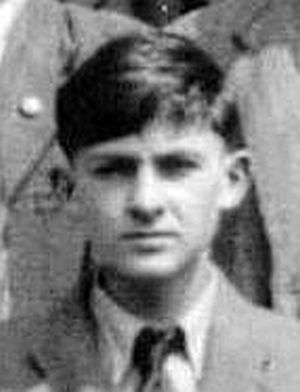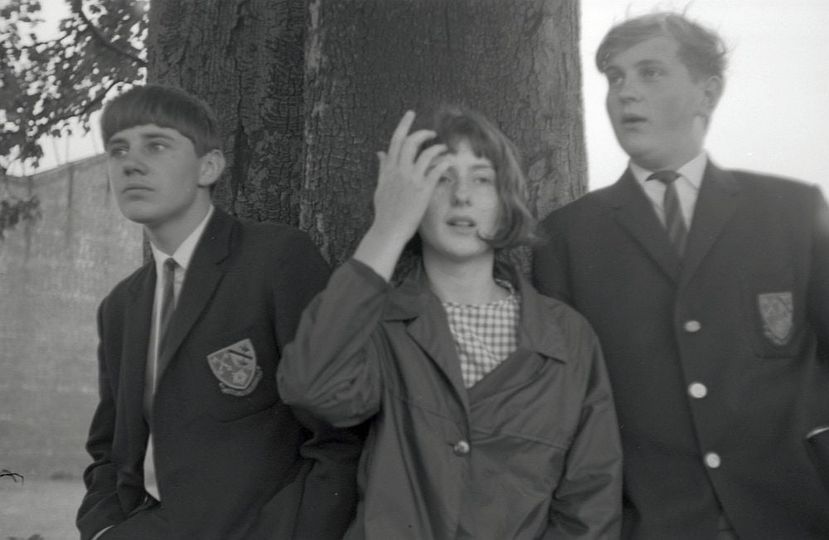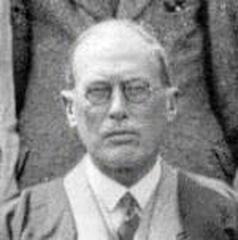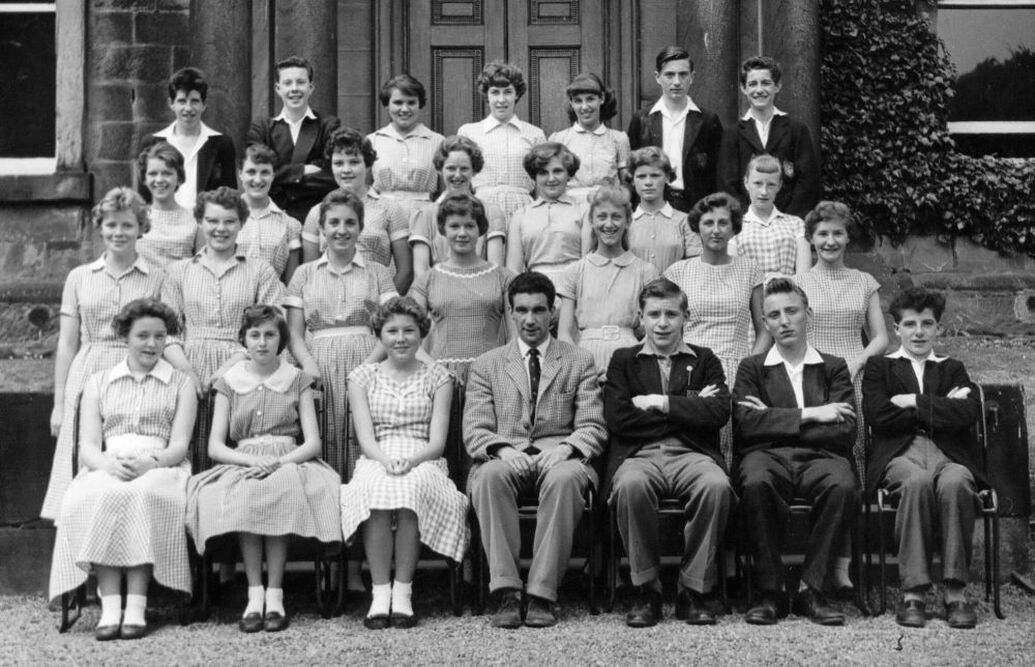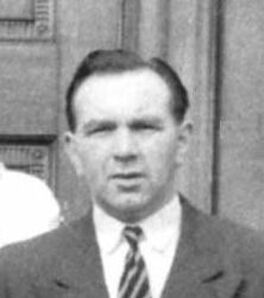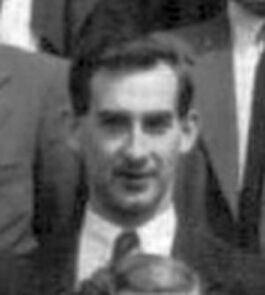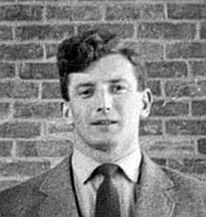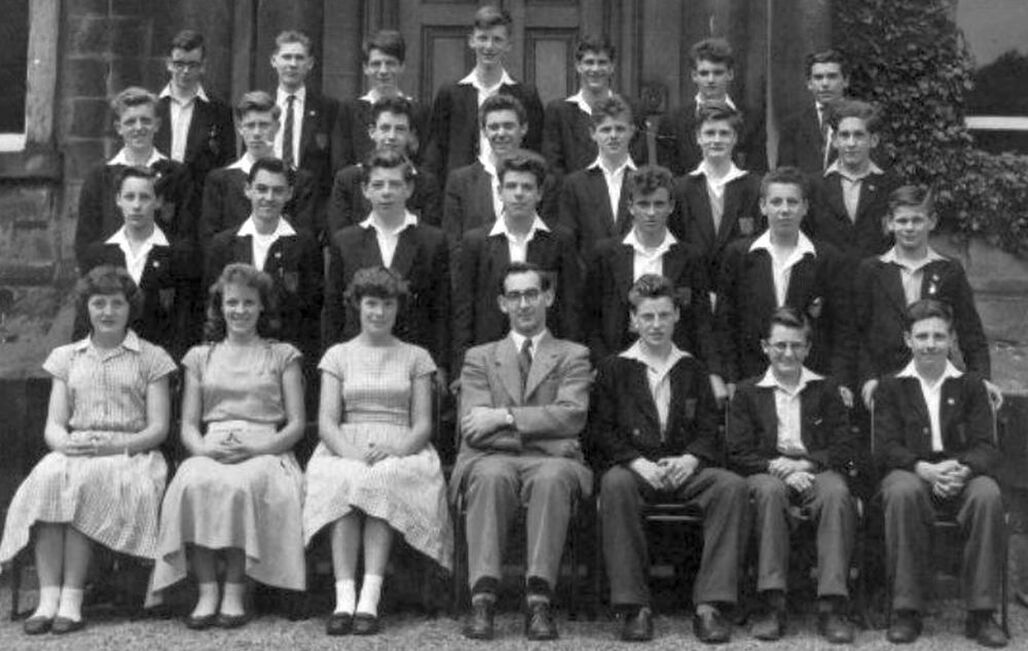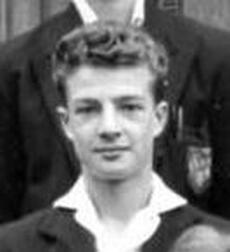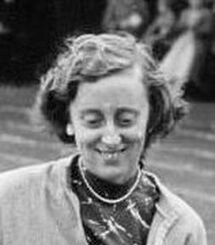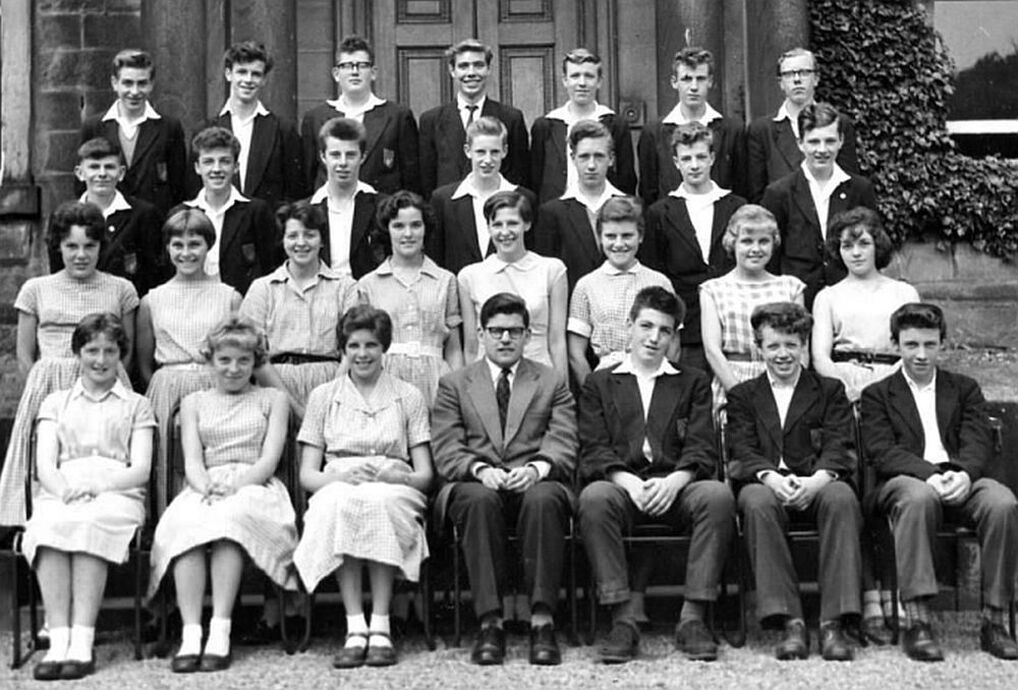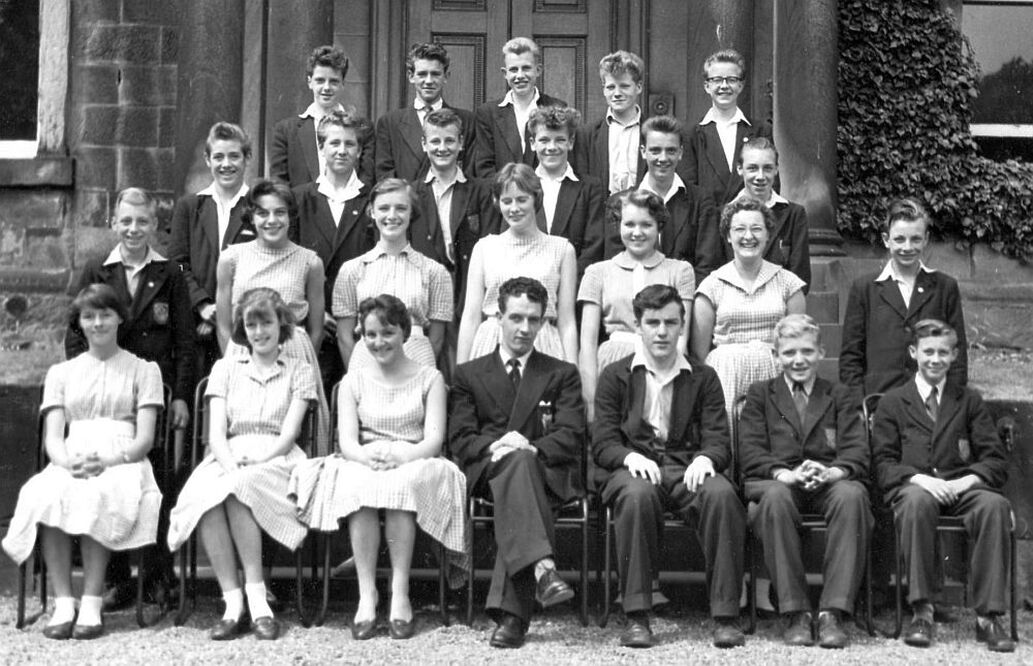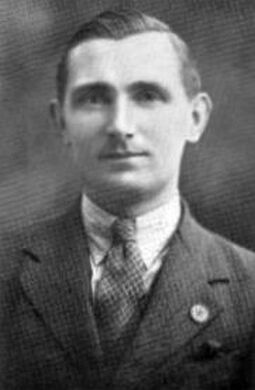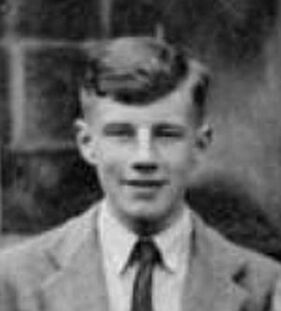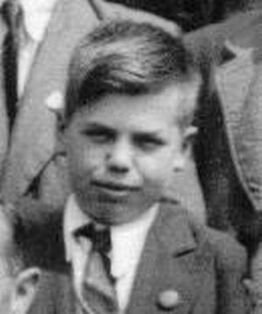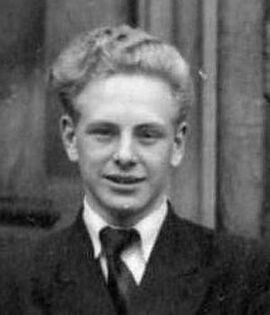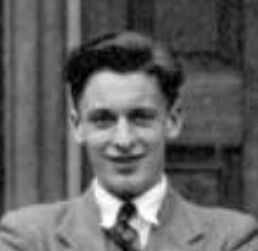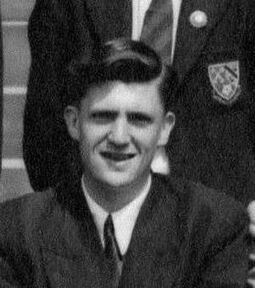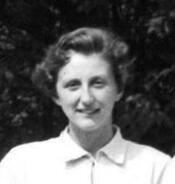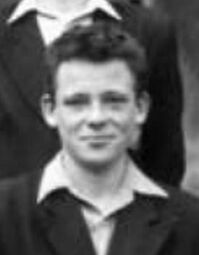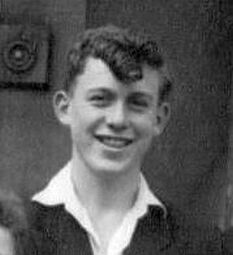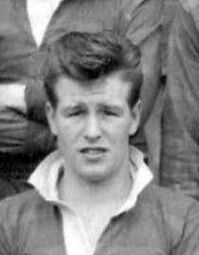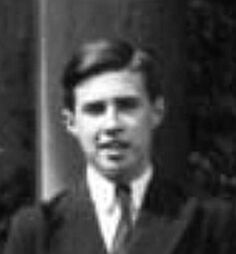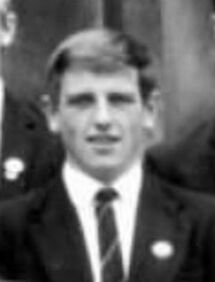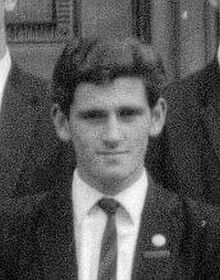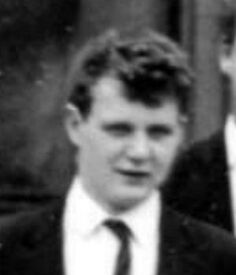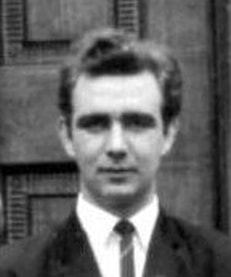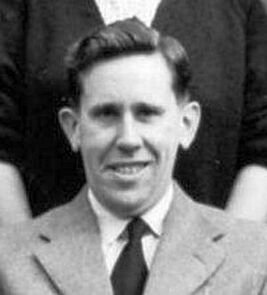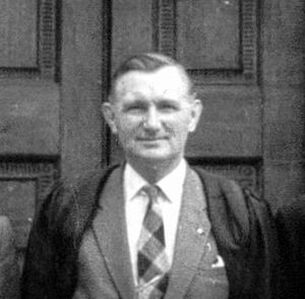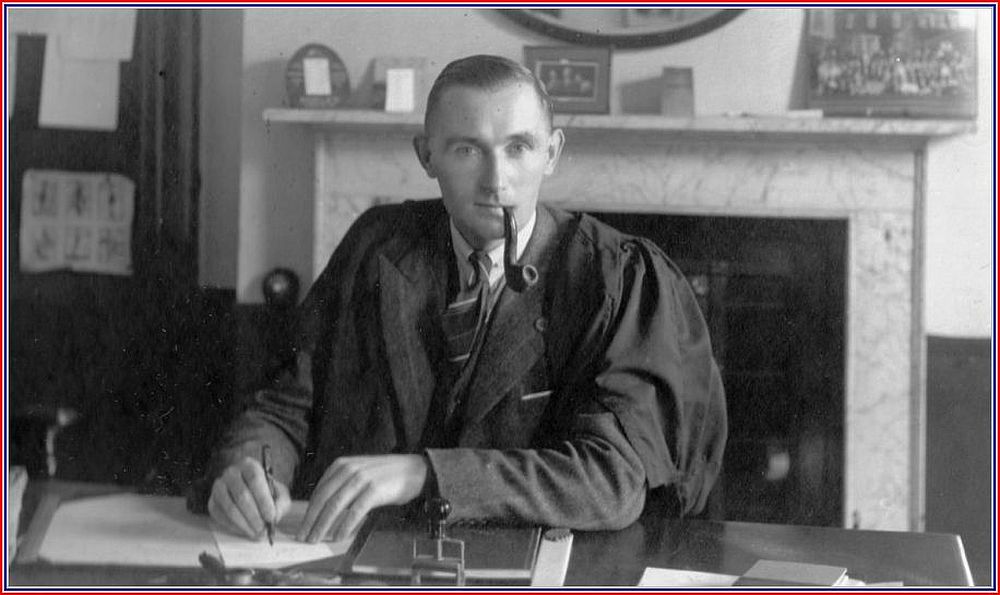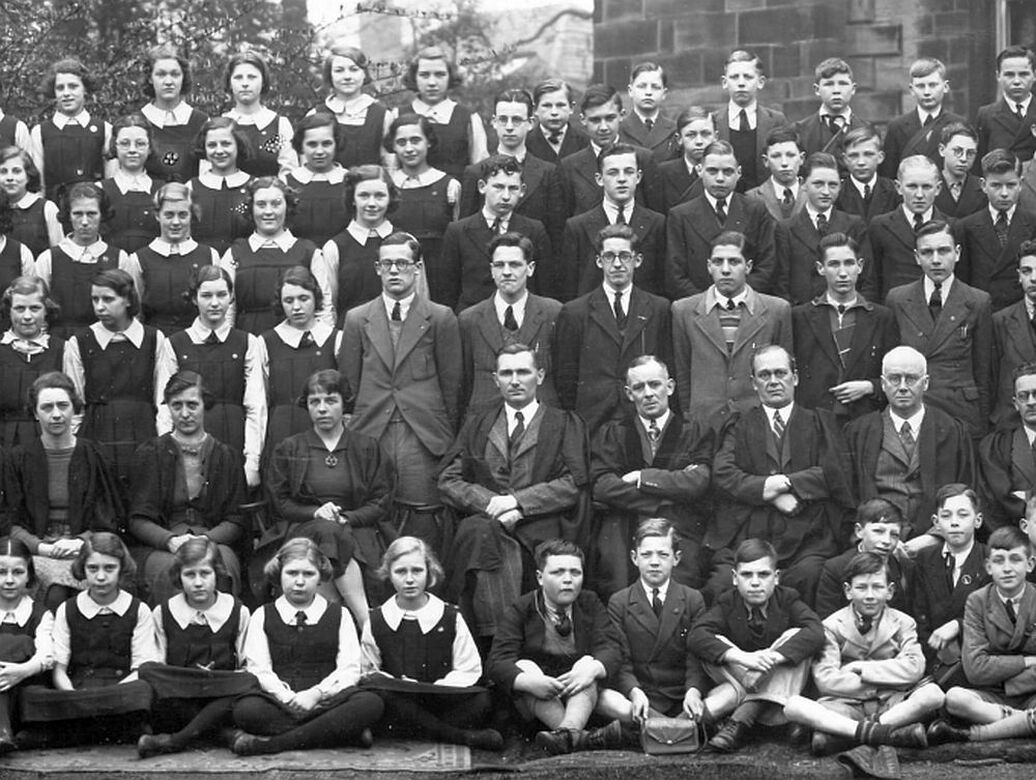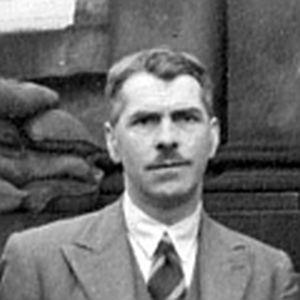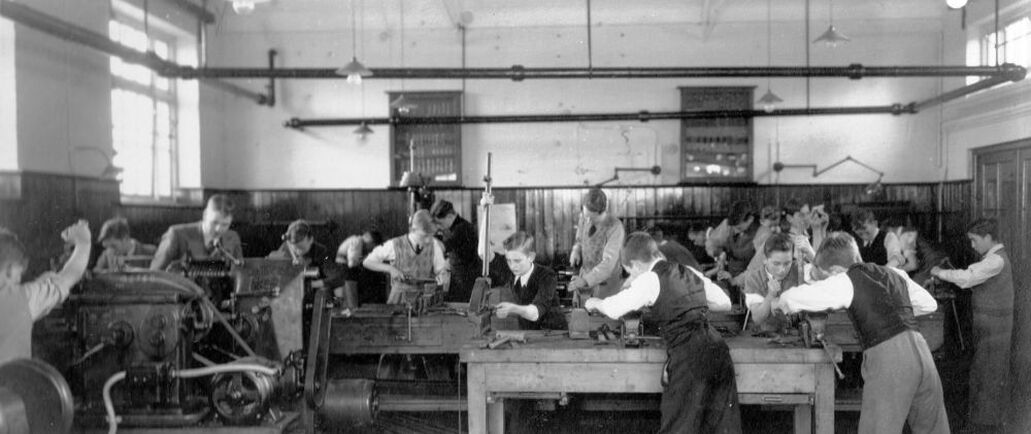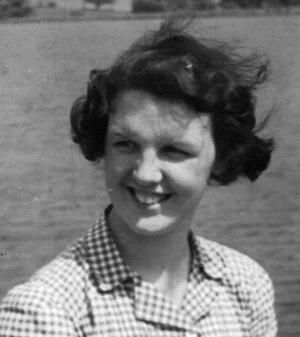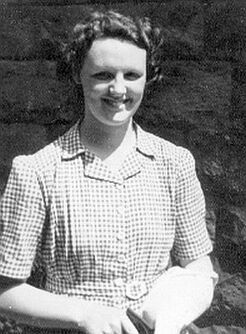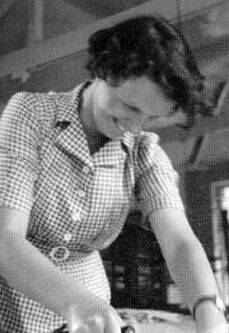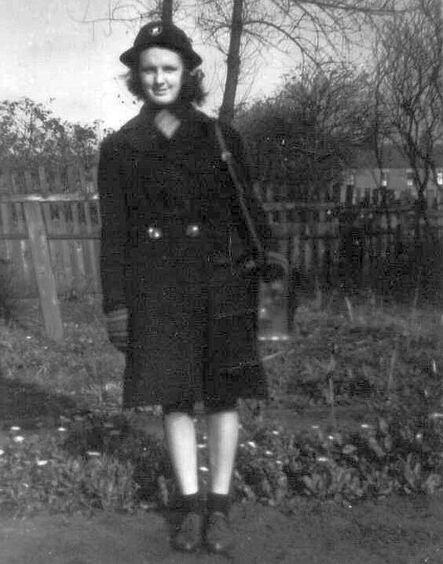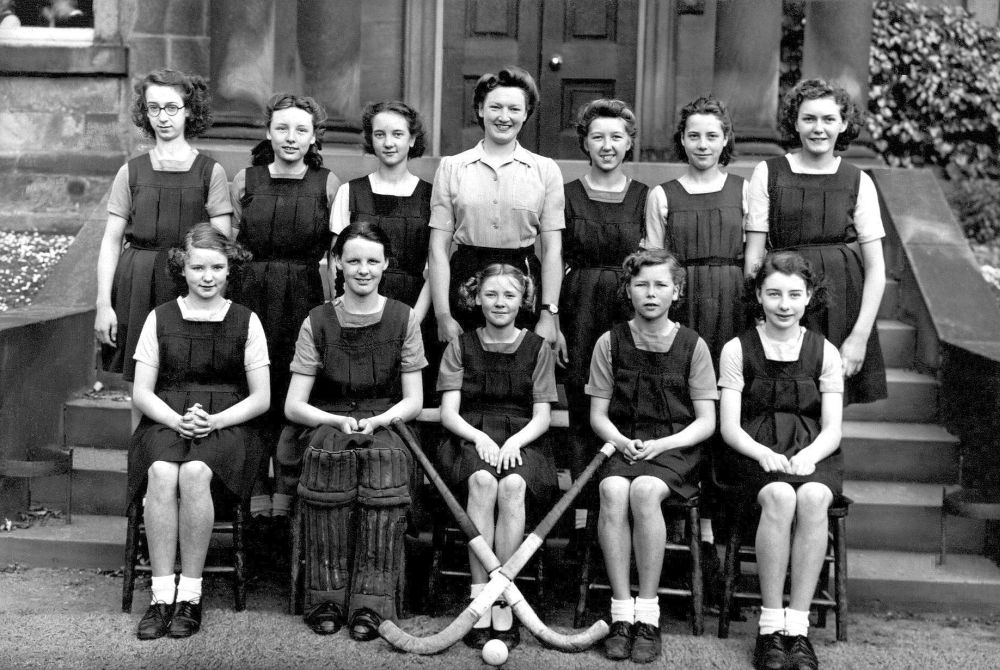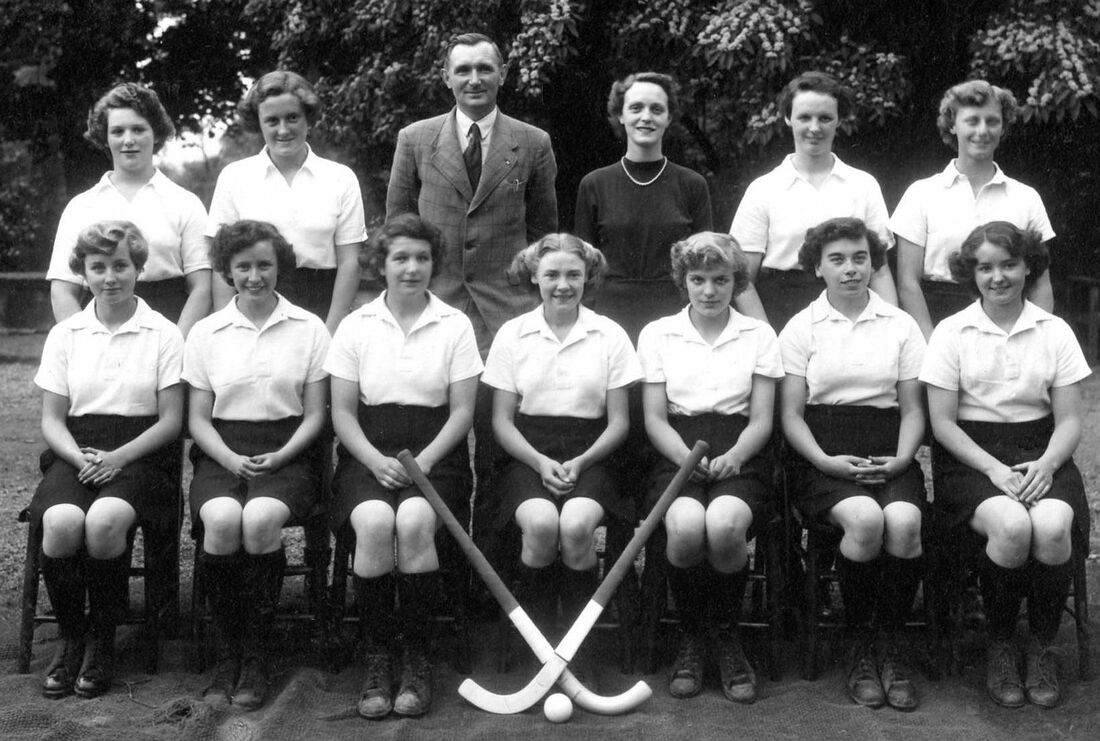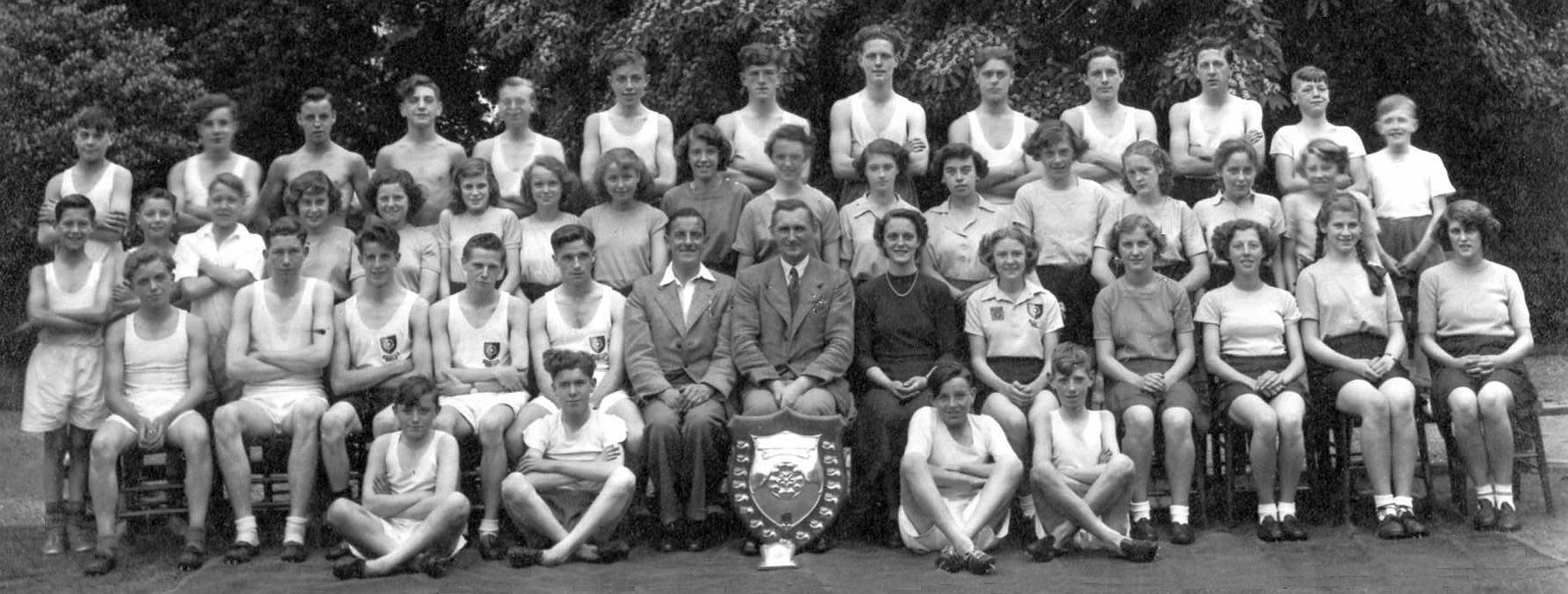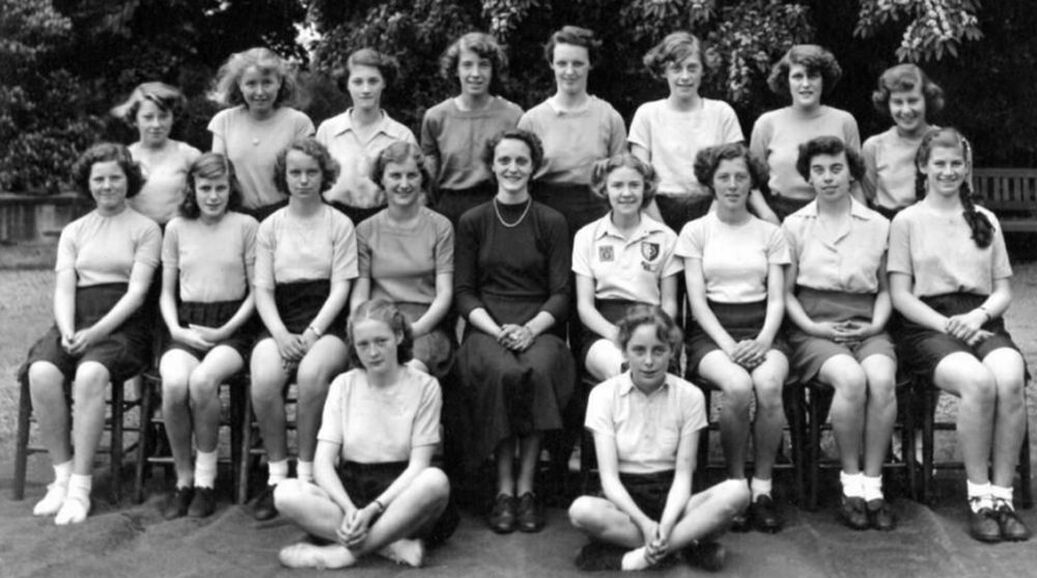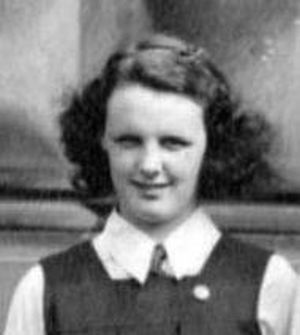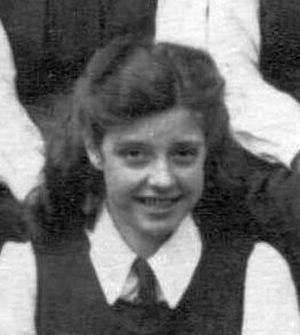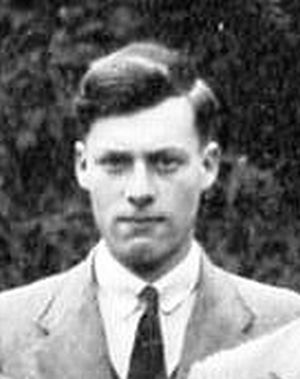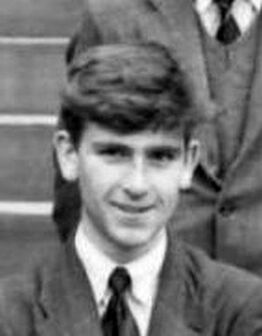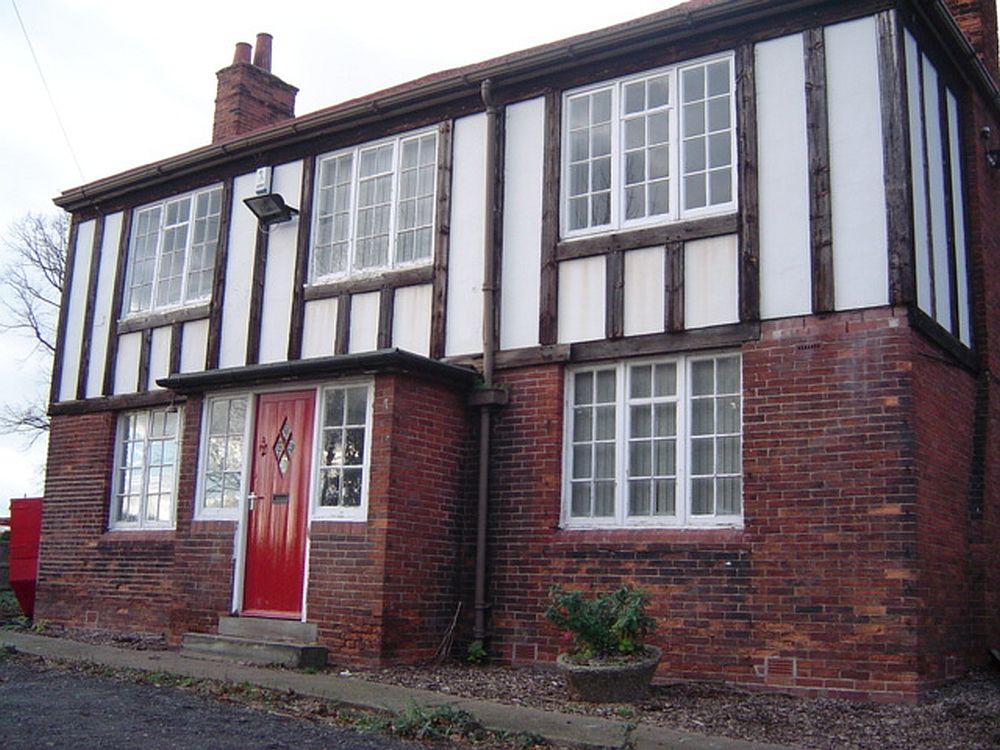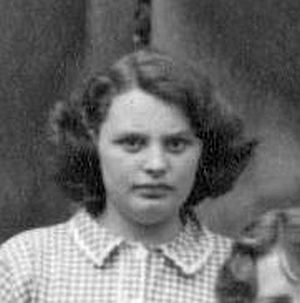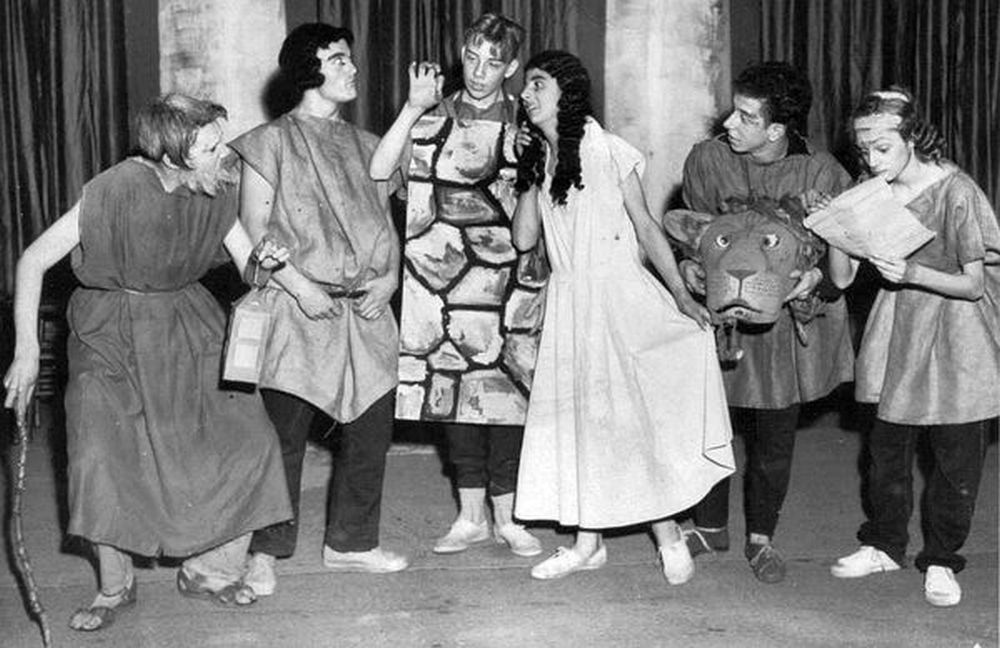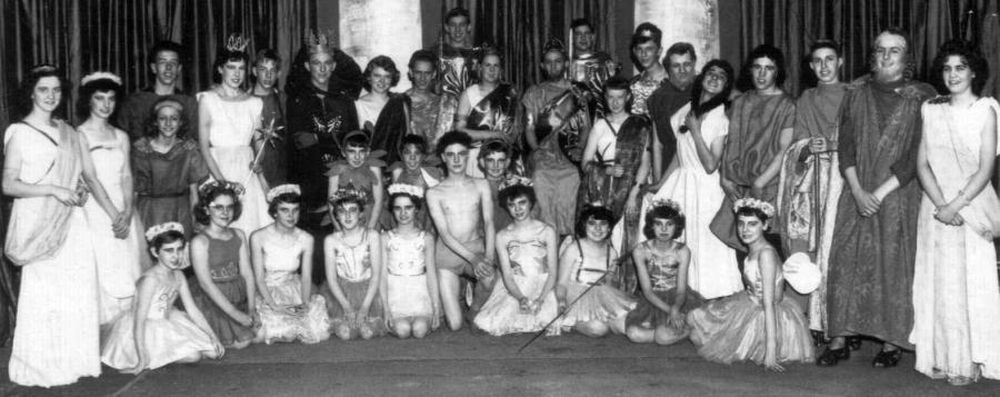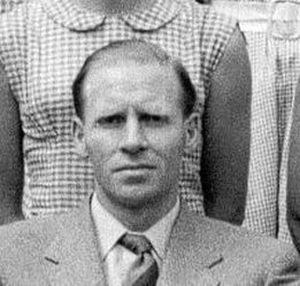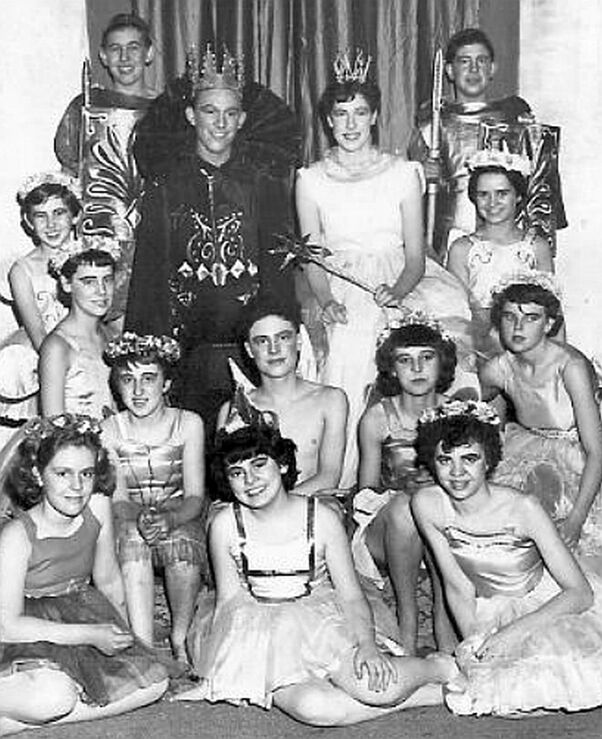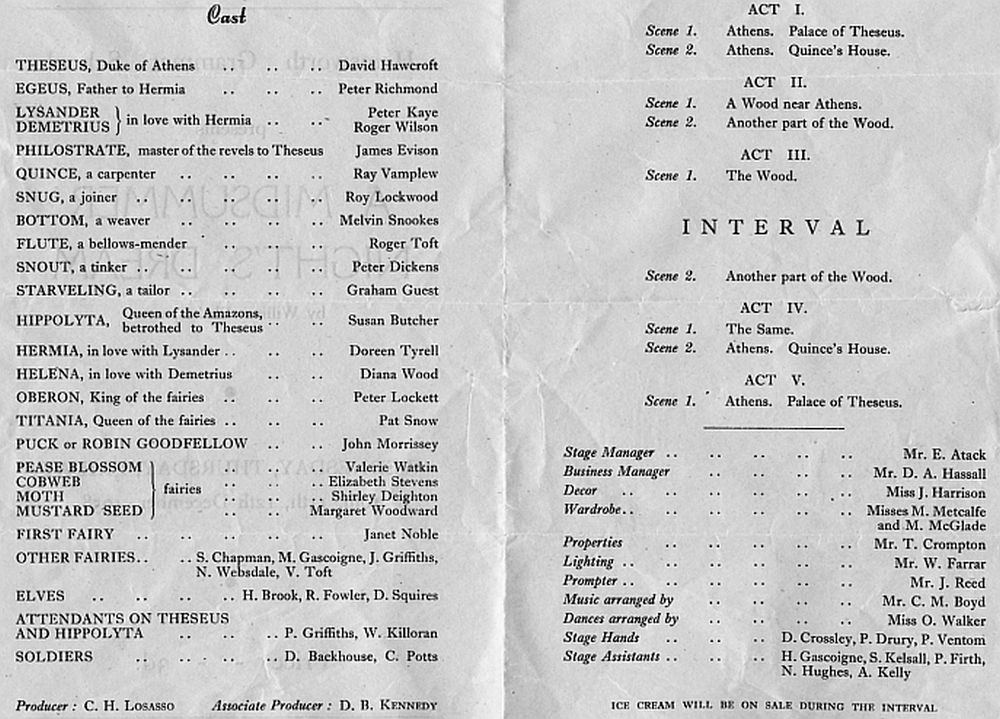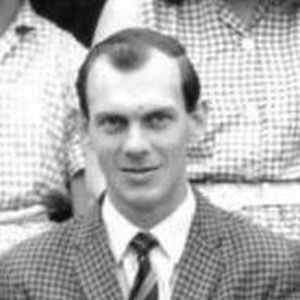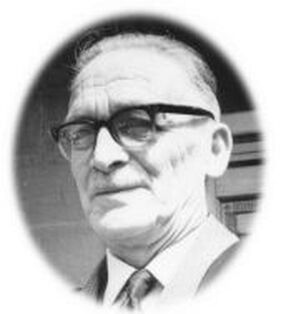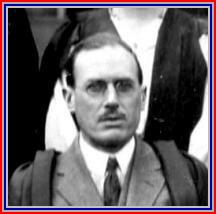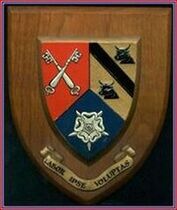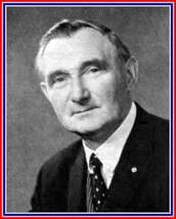A Personal View 16
Updated 16.04.2022
8 articles
Updated 16.04.2022
8 articles
"That school was the single most important feature in shaping what I became in so many ways. What is more, my regard for it and its place in an educational era have been enhanced by time not diminished."
Geoff Graham (HGS 1949-55, Talbot)
Geoff Graham (HGS 1949-55, Talbot)
Geoff Graham
Hi Dave,
When I write about HGS, I just cannot remain objective. That school was the single, most important feature in shaping what I became in so many ways. What is more, my regard for it and its place in an educational era have been enhanced by time not diminished. The awful thing is that by the time I became an adult and had my own children, I had a deep rooted conviction that the avante garde educationalists were wrecking a precious system. Nothing has changed that view and I still recall the pain I felt as my kids had to attend a Comprehensive of 1200/1300 pupils in the early 1970's. You see, I know what a desert their years there would be whilst my own secondary education had been spent in a glorious garden. How sad that forty years went by before Governments seem to be trying to resurrect something that sounds like the same kind of system though under a different, less socially provocative set of titles. Anyway, I hope you like my notes and that they provoke others to dig out their own fond memories of the remarkable people who taught us.
Geoff Graham (November 2002)
When I write about HGS, I just cannot remain objective. That school was the single, most important feature in shaping what I became in so many ways. What is more, my regard for it and its place in an educational era have been enhanced by time not diminished. The awful thing is that by the time I became an adult and had my own children, I had a deep rooted conviction that the avante garde educationalists were wrecking a precious system. Nothing has changed that view and I still recall the pain I felt as my kids had to attend a Comprehensive of 1200/1300 pupils in the early 1970's. You see, I know what a desert their years there would be whilst my own secondary education had been spent in a glorious garden. How sad that forty years went by before Governments seem to be trying to resurrect something that sounds like the same kind of system though under a different, less socially provocative set of titles. Anyway, I hope you like my notes and that they provoke others to dig out their own fond memories of the remarkable people who taught us.
Geoff Graham (November 2002)
Sheltering on a wet Sports Day
L-R: Mark Horbury, Valerie Newton, Christopher Stevens
Photo: Batey
L-R: Mark Horbury, Valerie Newton, Christopher Stevens
Photo: Batey
Table of Contents
|
1. Between Scylla & Charybdis
2. The Mock Elections 3. The HGS war effort 4. Irene Wright's corner 5. Headmaster's House and School Extensions |
6. The School Play 1958
7. The Purpose of Education 8. Memories from Mr Collette |
1. Between Scylla & Charybdis (a rock and a hard place)
Mr A.G. Jenkinson, Speech Day 1934
Mr A.G. Jenkinson, Speech Day 1934
"I suppose that to devise a suitable curriculum is one of the greatest difficulties that headmasters of secondary schools have to face at the present time. On the one hand we are told that a scrappy education is worse than useless, that a thorough knowledge of a few subjects is of far more value than a superficial knowledge of many. On the other hand the champions of particular subjects are all clamouring for the inclusion of their own as an indispensable part of education, and the mere mention of early specialisation is apt to raise a panic. How is the headmaster to steer a wise course between Scylla and Charybdis? (The Odyssey)
In these days, knowledge is becoming more and more specialised, and character, which is the ultimate aim of education, must be based on knowledge. An earlier specialisation and a reduction in the number of subjects is the safe way out of our difficulty. I think we have done something in the right direction by our system of alternative courses in the fourth and fifth years, but the curriculum is still overloaded.
Then there are examinations to be faced, and the requirements of examining bodies make it necessary to retain subjects which might otherwise be eliminated. I am not sure that the final solution of this complex problem is not to be found in a system of selective and non-selective schools. The selective school would take the more academic or would-be University pupils, and the non-selective would be able to adopt a more simplified and at the same time more broadened and more satisfying curriculum with possibly a School Certificate at the end of it for those who leave school at 16. I know the objections to such a scheme, but to my mind they would be far outweighed by its advantages if it led to a simplification of the curriculum."
In these days, knowledge is becoming more and more specialised, and character, which is the ultimate aim of education, must be based on knowledge. An earlier specialisation and a reduction in the number of subjects is the safe way out of our difficulty. I think we have done something in the right direction by our system of alternative courses in the fourth and fifth years, but the curriculum is still overloaded.
Then there are examinations to be faced, and the requirements of examining bodies make it necessary to retain subjects which might otherwise be eliminated. I am not sure that the final solution of this complex problem is not to be found in a system of selective and non-selective schools. The selective school would take the more academic or would-be University pupils, and the non-selective would be able to adopt a more simplified and at the same time more broadened and more satisfying curriculum with possibly a School Certificate at the end of it for those who leave school at 16. I know the objections to such a scheme, but to my mind they would be far outweighed by its advantages if it led to a simplification of the curriculum."
The Core Curriculum and the Option Subjects
In the Third Form (Year 9) of HGS you had to choose your options from the optional subjects which were available to be studied in the Fourth Form at G.C.E. Ordinary Level. In my Fourth Form (1958-59), we had four Forms called: 4A, 4S, 4T and 4G. The capital letters represented: Arts, Science, Technical and General. We studied the Core Curriculum which had subjects such as English Language and Maths, and the Optional Subjects which we had chosen. To me the system was easy to understand and worked well.
Checking on my report, the Core Curriculum comprised:
English Language, Mathematics, Religious Knowledge (non exam) and Physical Education (non exam).
The Optional Subjects which I chose were:
English Literature, French, Geography, Physics, Chemistry and Biology.
Checking on my report, the Core Curriculum comprised:
English Language, Mathematics, Religious Knowledge (non exam) and Physical Education (non exam).
The Optional Subjects which I chose were:
English Literature, French, Geography, Physics, Chemistry and Biology.
Below are the numbers of pupils in each of the four forms as counted on the Form photographs shown on the site for 1958-59.
Section Form Pupils
The Arts section 4A 27
The Science section 4S 29
The Technical section 4T 28
The General section 4G 24
Total 108 pupils
The only accurate number is 4S as the number of pupils came from my Report Book. There were often pupil absences on Photographs Day.
Section Form Pupils
The Arts section 4A 27
The Science section 4S 29
The Technical section 4T 28
The General section 4G 24
Total 108 pupils
The only accurate number is 4S as the number of pupils came from my Report Book. There were often pupil absences on Photographs Day.
4A 1958-59
The photo has been provided by Sheila Kelsall. Thank you.
Back Row L-R: Greg Whitehurst, Dave Hart, Marlene Hollinworth, Pat Snow, Pat Miles, Brian Denham, Brian Pawson
Third Row L-R: Margaret Birkin, Sandra Strutt, Jan Marston, Pat Cockburn, Christine Graham, Pat Whitehall, Doreen Tyrrell
Second Row L-R: Doris Sykes, Geraldine Walker, Ruth Ashley, Susan Marsh, Helen Gascoigne, Sheila Kelsall, Pat Stollard
Front Row L-R: Joan Foster, Catherine Dooley, Christine Whittaker, Mr. Knox, Gordon Bond, Robert Field, Arthur Street
The Form Prize was awarded to Pat Cockburn.
Back Row L-R: Greg Whitehurst, Dave Hart, Marlene Hollinworth, Pat Snow, Pat Miles, Brian Denham, Brian Pawson
Third Row L-R: Margaret Birkin, Sandra Strutt, Jan Marston, Pat Cockburn, Christine Graham, Pat Whitehall, Doreen Tyrrell
Second Row L-R: Doris Sykes, Geraldine Walker, Ruth Ashley, Susan Marsh, Helen Gascoigne, Sheila Kelsall, Pat Stollard
Front Row L-R: Joan Foster, Catherine Dooley, Christine Whittaker, Mr. Knox, Gordon Bond, Robert Field, Arthur Street
The Form Prize was awarded to Pat Cockburn.
Below are the Form Tutors I had for 4S and 5S
I note that Mr Dudley Taylor was my Fourth Form Tutor. He did not call his Form 4S, but called it 4Sc as did Mr Woodcock who was our Form Tutor after Mr Taylor had left to go to Ossett Grammar School. In the Fifth Form, Mr Booth reverted to calling his form 5S. Both nomenclatures obviously meant the same, which was that this form was the Science subdivision of the School Intake Year.
Form 4S 1958-59
Photo contributed by Jean Hardcastle and Jean Tallett. Thank you.
Back Row L-R: Ian Townsend, John Turner, David Hartley, Peter Kaye, Tony Hince, Dave McKenzie, Michael Harrison
Third Row L-R: Brian Lees, Michael Willson, Len Linsey, Bob Taylor, Albert Parkin, Michael Dixon, Godfrey Wass
Second Row L-R: Neville Mozley, Wray Vamplew, John Colley, Eddie Pickles, Ronnie Holland, Neil Whalley, Don Brett
Front Row L-R: Audrey Lynch, Jean Hardcastle, Jean Tallett, Mr. Woodcock, Brian May, Alan Barker, Keith Gainey
The Form Prize was awarded to Godfrey Wass.
Back Row L-R: Ian Townsend, John Turner, David Hartley, Peter Kaye, Tony Hince, Dave McKenzie, Michael Harrison
Third Row L-R: Brian Lees, Michael Willson, Len Linsey, Bob Taylor, Albert Parkin, Michael Dixon, Godfrey Wass
Second Row L-R: Neville Mozley, Wray Vamplew, John Colley, Eddie Pickles, Ronnie Holland, Neil Whalley, Don Brett
Front Row L-R: Audrey Lynch, Jean Hardcastle, Jean Tallett, Mr. Woodcock, Brian May, Alan Barker, Keith Gainey
The Form Prize was awarded to Godfrey Wass.
The total number of G.C.E. subjects which I studied was 8 with the additional two being non examinable. The latter were included to give a more rounded feel to the programme of study. Some pupils in HGS were able to study 10 subjects - but at what cost in terms of time and stress? Mr Jenkinson would quite possibly have considered 10 examination subjects as being an indication of an overloaded curriculum, especially if the two additional non-exam subjects were included on the lesson timetable for a pupil's course of study.
Here is a related anecdote from Frank Poskett
As I look at the form photos of our years, Dave, I see that the 4th and 5th years have a definite Arts to Science to Technology split. At one time it could be argued that this was a stereotyping of the roles of girls and boys in society. Now we know that the right and left side brains of boys and girls develop differently. The girls being more adaptable to languages and arts and the boys more adaptable to logical problems. There is, of course, an overlapping that makes people adequate in the "weaker side".
However, in my case, I think there was a brick wall between the two sides. I could be top of the class in Maths and bottom in French. At the end of year three we had to choose our options for the Fourth Year. Our French teacher, a very pleasant young lady called Miss Hampshire, had tried her best to help me to master the language. To be fair to myself I had also tried my best. After getting 31% in the annual exam I knew I had to drop French and take the alternative, Religious Knowledge. Being a gentleman, even at that early age, I knew I had to break the news gently to Miss. I approached her desk and told her that it was with great sadness that I had decided to drop French. She amazed me by saying "Let us get this perfectly straight, Poskett. You are not dropping French, French is dropping you!"
Frank Poskett
However, in my case, I think there was a brick wall between the two sides. I could be top of the class in Maths and bottom in French. At the end of year three we had to choose our options for the Fourth Year. Our French teacher, a very pleasant young lady called Miss Hampshire, had tried her best to help me to master the language. To be fair to myself I had also tried my best. After getting 31% in the annual exam I knew I had to drop French and take the alternative, Religious Knowledge. Being a gentleman, even at that early age, I knew I had to break the news gently to Miss. I approached her desk and told her that it was with great sadness that I had decided to drop French. She amazed me by saying "Let us get this perfectly straight, Poskett. You are not dropping French, French is dropping you!"
Frank Poskett
Frank's option choices placed him into Form 4T which is shown here.
Photo contributed by Daphne Slater. Thank you.
Back Row L-R: Chris Kenningley, Neville Edwards, Brian Stead, David Nye, Keith Hickman, Ray Griffiths, Tony Clay.
Third Row L-R: Kenny Kidd, Lewis Taylor, Pete Weston, Frank Picken, John Brailsford, Frank Poskett, Ian Beggs.
Second Row L-R: Helen (Daphne) Slater, Ellen Toulson, Linda Taylor, Ruth Heggett, Anne Johnson, Glenys Oades, Pam Rushworth, Pat Lockett.
Back Row L-R: Sandra Charlton, Enid Ford, Elaine Lodge, Mr Reasbeck, Malcolm Wilson, Geoff Abell, Robert Rennison.
The Form Prize was awarded to Christopher Kenningley.
Back Row L-R: Chris Kenningley, Neville Edwards, Brian Stead, David Nye, Keith Hickman, Ray Griffiths, Tony Clay.
Third Row L-R: Kenny Kidd, Lewis Taylor, Pete Weston, Frank Picken, John Brailsford, Frank Poskett, Ian Beggs.
Second Row L-R: Helen (Daphne) Slater, Ellen Toulson, Linda Taylor, Ruth Heggett, Anne Johnson, Glenys Oades, Pam Rushworth, Pat Lockett.
Back Row L-R: Sandra Charlton, Enid Ford, Elaine Lodge, Mr Reasbeck, Malcolm Wilson, Geoff Abell, Robert Rennison.
The Form Prize was awarded to Christopher Kenningley.
4G 1958-59
Back Row L-R: David Mosley, Michael Taylor, Neil Rogers, Geoffrey Rooke, Kenneth Stonier
Third Row L-R: George Baker, Dennis Matthews, Alan Roebuck, Martin Rhodes, Norman Valentine, Geoffrey Hinks
Second Row L-R: William Cole, Pauline Wildman, June Dickerson, Madeleine Wareing, Linda Fieldsend, June Clare, Jones D.
Front Row L-R: Gail Picken, Celia Taylor, June Darcy, Mr. E.R. Powell, Colin Bond, Raymond Cooke, Michael Duke
The Form Prize was awarded to June Darcy.
Third Row L-R: George Baker, Dennis Matthews, Alan Roebuck, Martin Rhodes, Norman Valentine, Geoffrey Hinks
Second Row L-R: William Cole, Pauline Wildman, June Dickerson, Madeleine Wareing, Linda Fieldsend, June Clare, Jones D.
Front Row L-R: Gail Picken, Celia Taylor, June Darcy, Mr. E.R. Powell, Colin Bond, Raymond Cooke, Michael Duke
The Form Prize was awarded to June Darcy.
The curriculum decisions taken reflect the model which we all followed at HGS. It stood the test of time. However, once you had taken the decisions in the Third Form you were locked in to follow your subject choices. For example, it was rare for pupils to move between Arts, Sciences or Technical courses. This could be problematical for pupils if career intentions did change.
Here is an example from Keith Vest, HGS 1946-50 (APV15):
"It may be the fact that I realised the school was geared to academia, whereas I wanted to be an engineer. This did not help. The problem was, of course, that one gained a place at 11 years old and the system did not consider changes in ambition."
Here is an example from Keith Vest, HGS 1946-50 (APV15):
"It may be the fact that I realised the school was geared to academia, whereas I wanted to be an engineer. This did not help. The problem was, of course, that one gained a place at 11 years old and the system did not consider changes in ambition."
A School Prospectus extract from Mr Hamilton's early days as Headmaster in the late 1930s.
- The School was inspected by the Board of Education in 1936, and its scheme of instruction has the Board's approval. The curriculum includes Scripture, English, French, Latin, History, Geography, Mathematics, Physics, Chemistry, Botany, Art, Music, Physical Training, Woodwork, Metalwork, Machine Drawing, Housecraft and Needlework.
- Three Courses - an Arts Course, A Science Course, and a Commercial Course - are provided for pupils in Forms 4 and 5, in order to give boys and girls a better chance of following up the subjects for which they have a natural aptitude or which may be more beneficial to them in the future.
- All these courses, in which general culture is not neglected, lead up to the School Certificate Examination, which is taken by Forms 5 in July each year; no boy or girl may take one of these courses except under the condition of taking the School Certificate Examination.
- In Forms 6, three or four subjects are studied for the Higher School Certificate, which is taken two years after the School Certificate and a certain number of periods are allotted each week to private study and general reading.
2. The Mock Elections
Mock Election 1949-1950
|
Peter Sutcliffe
|
Geoff Govier
|
Peter Wall
|
Pupils of Hemsworth Grammar School are enjoying a mock election. The election is being contested by Liberal, Labour, Conservative, Communist and Independent candidates, and although no agents have been appointed, the School Prefects are rallying as workers for the nominees. Arranged by the school's Historical Society, the election is purely instructional and is not to be regarded as an indication of the children's political beliefs. It aims to show the children that there is more than one point of view and to give them an idea of what is happening in the outside world.
Each candidate is to be allowed one lunch hour in which to arrange a "political" meeting and on "polling" day - Wednesday - they are to be allowed a final 15 minutes speech before the whole school. To add a touch of realism, the Conservative and Labour candidates for the Hemsworth Division, Miss. Jean Asquith and Mr. Horace E. Holmes, have been invited to address the pupils. To assure a "clean fight", Mr. R. W. Hamilton, who is to act as the Returning Officer, has prohibited interference with "party" posters and has ruled that no literature or posters are to be displayed without the signature of the candidate they are intended to support. The vote will be taken on Wednesday afternoon and the scholars will assemble later in the day to hear the result.
Geoff Govier
"After a struggle with opponents who were both enthusiastic and eloquent, the Labour candidate (Eric Twigg) in the School Election succeeded in obtaining a majority. Bribery and corruption were limited by the morals and purses of the candidates."
School Magazine Editorial
From the Historical Society Report of 1950
"By far the greatest event, however, was the Mock Election at which the Socialist candidate held his seat. Realism was added to the event by visits from the two Parliamentary candidates for the constituency."
Peter Sutcliffe
Each candidate is to be allowed one lunch hour in which to arrange a "political" meeting and on "polling" day - Wednesday - they are to be allowed a final 15 minutes speech before the whole school. To add a touch of realism, the Conservative and Labour candidates for the Hemsworth Division, Miss. Jean Asquith and Mr. Horace E. Holmes, have been invited to address the pupils. To assure a "clean fight", Mr. R. W. Hamilton, who is to act as the Returning Officer, has prohibited interference with "party" posters and has ruled that no literature or posters are to be displayed without the signature of the candidate they are intended to support. The vote will be taken on Wednesday afternoon and the scholars will assemble later in the day to hear the result.
Geoff Govier
"After a struggle with opponents who were both enthusiastic and eloquent, the Labour candidate (Eric Twigg) in the School Election succeeded in obtaining a majority. Bribery and corruption were limited by the morals and purses of the candidates."
School Magazine Editorial
From the Historical Society Report of 1950
"By far the greatest event, however, was the Mock Election at which the Socialist candidate held his seat. Realism was added to the event by visits from the two Parliamentary candidates for the constituency."
Peter Sutcliffe
Although, as Geoff Govier says, the Mock Election "aims to show the children that there is more than one point of view and to give them an idea of what is happening in the outside world", they were great fun too. People were very partisan and the regular public meetings held in the grounds at break and lunch-time were particularly entertaining with plenty of good-natured, if occasionally rowdy, heckling. Eric Twigg was the successful Labour candidate but I am afraid I cannot remember any others.
Peter Wall, HGS 1947-54
Peter Wall, HGS 1947-54
Eric Twigg, Labour Candidate
Mock Election Year 1954-55
Terry Dillon
I chaired the Historical Society and in the Mock Election of 1955 (I think the date is right, but could be 54) I became the school's representative, beating no less than Mike Nurney the communist and two other candidates. I remember on the day of our presentations to the whole school, the three official candidates for Hemsworth constituency were invited and were present on the stage.
Terry Dillon, HGS 1947-55
Terry Dillon, HGS 1947-55
Sheila Kelsall
Mock Election 1959-60
I remember the above Mock Election taking place in School, and the "buzz" of excitement at something new going on in and around our classrooms. I have to admit I had no idea it was connected to the Historical Society.
My friends and I spent a few dinnertimes in a classroom making rosettes for the candidates from crepe paper, and I have a vague memory of selling some of them for the Save the Children Fund. I was there when each candidate gave a formal address from the stage in the Hall, setting out their policies to the assembled school, and earning applause or derision for their efforts. There was a great deal of heckling and fun, and then we all cast our votes. Which of the pupils had the franchise I can't recall, and perhaps someone with a better memory than mine may tell us where the Polling Booths were!
I remember the above Mock Election taking place in School, and the "buzz" of excitement at something new going on in and around our classrooms. I have to admit I had no idea it was connected to the Historical Society.
My friends and I spent a few dinnertimes in a classroom making rosettes for the candidates from crepe paper, and I have a vague memory of selling some of them for the Save the Children Fund. I was there when each candidate gave a formal address from the stage in the Hall, setting out their policies to the assembled school, and earning applause or derision for their efforts. There was a great deal of heckling and fun, and then we all cast our votes. Which of the pupils had the franchise I can't recall, and perhaps someone with a better memory than mine may tell us where the Polling Booths were!
"The highlight of the year was undoubtedly the mock election. Anderson, the Labour candidate, Lockett for the Conservatives, Deeley for the Communists and Evison for the Liberals, supported by an army of electioneering assistants, besieged the school with posters, pamphlets, rosettes, meetings and speeches in corridor, classroom and on the playing fields, and at the dining table in the election campaign. The climax of the campaign was reached when the candidates endeavoured to prove their party policy in the Assembly Hall before the rest of the school. This gave rise to heated arguments and a great deal of fun. Mr. Hudson, along with Mr. Hodson, helped greatly in the organisation of the election and the Society would like to thank them both. Toft was the Chairman of the Society this year, while Cuthbert took over Beaumont's position as Secretary when he left to join the army. We wish him every success in his military career."
Michael Cuthbert L6A
The result was as follows:
Michael Cuthbert L6A
The result was as follows:
Candidate Party Votes
Mock Election 1964-1965
The day before the general election on October 14th, the school held its own mock election. There were four candidates Hryschko for Labour, Hudson for Conservative, Baxendale for Liberal and Thompson for Communist. During the three weeks before the election all three candidates were very busy finding all the information they could about their parties, making posters and rosettes and preparing their election addresses. With the sale of rosettes the election campaign began. The school became ablaze with colour, party posters covering all available space, and most people in the school going around wearing party rosettes - everyone became interested in the forthcoming election. In the four days prior to polling day, each party held a meeting in the lecture room, and here the candidates gave their election addresses and answered all the questions they could from the crowded auditorium. All of these meetings were extremely well attended and everyone took part, even if it was just by heckling.
|
Vic Hryschko
|
Andrew Hudson
|
Richard Baxendale
|
Geoff Thompson
|
On the day prior to the election candidates representing each of the parties in constituencies around the Hemsworth area came to address the school. Mr. Beaney M.P., spoke on behalf of the Labour party, Mr. Francis Roberts, prospective Conservative candidate in the Wakefield area spoke for the Conservatives in the absence of Mr. John Keatley who was unfortunately ill and unable to attend. Mr. Collins the Liberal candidate in Wakefield spoke for the Liberals, and Mr. Wilkinson, the secretary of the Wakefield Communist party spoke for the Communists. All of the speeches were well received by the school, and the school candidates were extremely grateful to the four representatives for giving up their valuable campaigning time by coming to speak to the school.
The day of the election finally came. In the morning a mass meeting was held in the Main Hall at which all from Forms 4, 5 and 6 were present. A final address was given by Hryschko, Hudson, Baxendale and Thompson and this was followed by all classes going to their rooms to vote. The result of the election was announced by the Headmaster at 12 noon after all the returns had been carefully counted.
The day of the election finally came. In the morning a mass meeting was held in the Main Hall at which all from Forms 4, 5 and 6 were present. A final address was given by Hryschko, Hudson, Baxendale and Thompson and this was followed by all classes going to their rooms to vote. The result of the election was announced by the Headmaster at 12 noon after all the returns had been carefully counted.
The result was as follows:-
1st: Hryschko, Labour
2nd: Baxendale, Liberal
3rd: Hudson, Conservative
4th: Thompson, Communist.
1st: Hryschko, Labour
2nd: Baxendale, Liberal
3rd: Hudson, Conservative
4th: Thompson, Communist.
We must of course thank Mr. Hudson and Mr. Hamilton for helping in the organisation of the election. Without their help it could not have been a success.
Geoff Thompson
Geoff Thompson
3. The HGS war effort
When we were at HGS, many of us will have taken part in fundraising activities for the charities which the school supported. One which springs to mind is the Save the Children Fund. However, during WW2, things were rather different.
When we were at HGS, many of us will have taken part in fundraising activities for the charities which the school supported. One which springs to mind is the Save the Children Fund. However, during WW2, things were rather different.
Mr Hamilton in his office in 1940
This was his third year as Headmaster. He would have been about 38 years old. He must have faced intense pressure in those early years. His excellent personal organisation as the leader of the school community must have helped him greatly in his daily work.
This was his third year as Headmaster. He would have been about 38 years old. He must have faced intense pressure in those early years. His excellent personal organisation as the leader of the school community must have helped him greatly in his daily work.
At Speech Day in 1941, Mr. Hamilton said the school had been contributing to the national cause. Some of the HGS war effort work is briefly itemised here.
During the last year it raised £350 from weekly collections by the children, and in war weapons week saved £2,325/19s/6d. During the summer campaign it raised £96. In addition the school contributed to a comforts fund. Last year it raised £69/7s/3d, which included a gift of £5 from the Old Hilmians. Useful articles of all kinds had been made and sent to hospitals. Over 200 gifts in the form of gloves and scarves had been sent to old students in the Forces. Parcels of knitted comforts have also been sent to the Merchant Navy. When Liverpool and Glasgow suffered from air raids over a hundred babies’ garments were knitted and despatched to those places. Articles of clothing of all kinds, over 2,000 in all, had been collected and sent to blitzed areas. Throughout the year the school had also sent sums of money to various charities, both national and local, the total contribution being £45.
More than 234 Old Hilmians were serving with the Forces. Some of those old pupils were prisoners of war. The present pupils subscribed to a “Prisoners of War Fund”, and sent approximately 10 shillings every week to the Red Cross to provide a parcel for one or other of them. The school had done a little in the “Grow More Food” campaign, having ploughed up an acre of the playing field and set potatoes, cabbages and cauliflowers.
More than 234 Old Hilmians were serving with the Forces. Some of those old pupils were prisoners of war. The present pupils subscribed to a “Prisoners of War Fund”, and sent approximately 10 shillings every week to the Red Cross to provide a parcel for one or other of them. The school had done a little in the “Grow More Food” campaign, having ploughed up an acre of the playing field and set potatoes, cabbages and cauliflowers.
Here are some of the pupils and staff from 1940 who took part in the admirable HGS war effort.
The faces indicate that this was not a happy time.
The faces indicate that this was not a happy time.
Names have been provided by Jean Burton, Mollie Weaver, Brenda Swinbank and Stuart Walker. Thank you.
Back Row L-R: Annie Brammer, 2, Norma Mullaney, 4, 5, 6, 7, 8, Joe Bailey, 10, 11
Sixth Row L-R: Audrey Adamson, 2, 3, 4, 5, 6, 7, 8, 9, 10, 11
Fifth Row L-R: 1, Audrey Hardy, Dorothy Grange, Patricia Morris, 5, 6, Perkins, Herbert Brammer, 9, Ian Moverley
Fourth Row L-R: Edna Wilson, 2, 3, Audrey Welch, Alwynne Younge, Charles Hellewell, Joe Dean, 8, Frank Mugglestone, Wesley Kenworthy, Peter Gray
Third Row L-R: Miss Kenward, Miss Prince, Miss Shortridge, Mr. Hamilton, Mr. Crossland, Mr. Storer, Mr. Austin, Mr. Collette
Second Row L-R: Barry Cook, 2
First Row L-R: Bessie Findler, Joan Gething, 3, Shirley Price, Pat Rowley, 6, Brian Swinbank, 8, D.H. Fox, George Rogers
Back Row L-R: Annie Brammer, 2, Norma Mullaney, 4, 5, 6, 7, 8, Joe Bailey, 10, 11
Sixth Row L-R: Audrey Adamson, 2, 3, 4, 5, 6, 7, 8, 9, 10, 11
Fifth Row L-R: 1, Audrey Hardy, Dorothy Grange, Patricia Morris, 5, 6, Perkins, Herbert Brammer, 9, Ian Moverley
Fourth Row L-R: Edna Wilson, 2, 3, Audrey Welch, Alwynne Younge, Charles Hellewell, Joe Dean, 8, Frank Mugglestone, Wesley Kenworthy, Peter Gray
Third Row L-R: Miss Kenward, Miss Prince, Miss Shortridge, Mr. Hamilton, Mr. Crossland, Mr. Storer, Mr. Austin, Mr. Collette
Second Row L-R: Barry Cook, 2
First Row L-R: Bessie Findler, Joan Gething, 3, Shirley Price, Pat Rowley, 6, Brian Swinbank, 8, D.H. Fox, George Rogers
Mr Waters in 1940
Note the defensive sandbags in front of the window of Room 1.
Note the defensive sandbags in front of the window of Room 1.
The HGS war effort still had one more phase to develop. The school offered its engineering facilities to the Government in June 1940, and three weeks later began training men and women to work in munition factories. Day and night shifts were worked, and two qualified instructors, directed by Mr. Waters, the Engineering Master, were responsible for the training. Their product was so good that an aeroplane factory had offered to take all their trainees as fast as they could turn them out.
Mr Waters in the Metalwork Room in 1940
The School's contribution to the war effort figured largely in the Headmaster's annual report on Speech Day 1941. He made special reference to the Hemsworth & District Squadron of the Air Training Corps, in the formation of which, he said, the school had taken the initiative. Mr. Hamilton said that in many Secondary Schools A.T.C. units were for members only. There were arguments for this, of course, but he believed that in a struggle such as we were engaged in, unity between all sections of the people, and more especially our youth, was essential if we were to win the war. In this area, membership was open to all boys, no matter what schools they had attended, and he had no regrets for the step. From the beginning every male member of the staff volunteered to lend a hand. Though not all were called upon, most of the officers were members of the staff, and all of them willingly devoted their time to the welfare of the Squadron.
“This working at double pressure”, RWH remarked, “has been accomplished only by much sacrifice on the part of the staff, nearly every member of which has at least one extra job of national importance. I would not say that we like it, but we realise that Hitler must be beaten, and so far, our share has been to double up our hours of work.”
4. Irene Wright's corner
Irene was one of the major contributors of material to the website. The enrichment of the site's content is much appreciated. I was able to tell her so myself as we visited her at her lovely home near the coast in Cornwall. I certainly miss those afternoon teas on her lawn by the trout stream as we talked about all things HGS.
Irene was one of the major contributors of material to the website. The enrichment of the site's content is much appreciated. I was able to tell her so myself as we visited her at her lovely home near the coast in Cornwall. I certainly miss those afternoon teas on her lawn by the trout stream as we talked about all things HGS.
a. Introduction
b. Sport
c. Memories and Questions
d. Random Reflections
b. Sport
c. Memories and Questions
d. Random Reflections
a. Introduction
Initial Contact
Dear Dave,
Leighton Smith sent me your web site in his Christmas mail. What a wonderful Christmas gift! Seven happy years spent at HGS. It was an excellent school with beautiful grounds. I am proud to be a pupil and an Old Hilmian. 50 odd years later I look forward to catching up on the news. Any news of Anne Woodcock or Brenda Shelton? I have lots of school photographs but alas no scanner. I’ve only had my computer for three weeks so I am very much a learner.
Irene (December 2002)
Dear Irene,
Hello and welcome to the web-site. Thank you very much for getting in touch. I also spent seven very happy years at HGS (1955-62, Holgate). The lovely buildings and grounds remain in my memory to this day as do many other excellent things about the school. Leighton has made quite an impact on the site. He has provided lots of photos and memories. I will add your email and email address to the site. If you would like to contribute photos to the site, a scanner is not necessary as you can simply post them to the site. They will be scanned and returned to you. If you want to do that, just let me know. Please enjoy the site. As time goes on it will develop further. If you have any specific memories that you would like to contribute just type them and send them in. There are lots of Hilmians who would love to hear about your time in school. I am one of them.
Dave McKenzie
Dear Dave.
Thank you for your reply. Yes, I would be willing to send all the photos I have. You could scan any of them that you think would be of any use. Many years ago I was staying with friends in Exmouth in Devon and contacted Russell Hamilton and asked if I could visit them one morning. I was cordially invited to coffee and was made so welcome. Russell and I chatted about Hemsworth until lunch time. It was a very odd but wonderful experience. Although I was in my late thirties, I was still in awe of him, but he put me completely at ease.
Irene (December 2002)
Leighton Smith sent me your web site in his Christmas mail. What a wonderful Christmas gift! Seven happy years spent at HGS. It was an excellent school with beautiful grounds. I am proud to be a pupil and an Old Hilmian. 50 odd years later I look forward to catching up on the news. Any news of Anne Woodcock or Brenda Shelton? I have lots of school photographs but alas no scanner. I’ve only had my computer for three weeks so I am very much a learner.
Irene (December 2002)
Dear Irene,
Hello and welcome to the web-site. Thank you very much for getting in touch. I also spent seven very happy years at HGS (1955-62, Holgate). The lovely buildings and grounds remain in my memory to this day as do many other excellent things about the school. Leighton has made quite an impact on the site. He has provided lots of photos and memories. I will add your email and email address to the site. If you would like to contribute photos to the site, a scanner is not necessary as you can simply post them to the site. They will be scanned and returned to you. If you want to do that, just let me know. Please enjoy the site. As time goes on it will develop further. If you have any specific memories that you would like to contribute just type them and send them in. There are lots of Hilmians who would love to hear about your time in school. I am one of them.
Dave McKenzie
Dear Dave.
Thank you for your reply. Yes, I would be willing to send all the photos I have. You could scan any of them that you think would be of any use. Many years ago I was staying with friends in Exmouth in Devon and contacted Russell Hamilton and asked if I could visit them one morning. I was cordially invited to coffee and was made so welcome. Russell and I chatted about Hemsworth until lunch time. It was a very odd but wonderful experience. Although I was in my late thirties, I was still in awe of him, but he put me completely at ease.
Irene (December 2002)
1948 and ready for school on a Spring Morning
Dear Irene,
I hope you had a pleasant Christmas Day and are now ready for some Homework! It would help me if you could identify as many people on the photos as possible, especially the two girls you have specifically mentioned. If you could also identify each photo - 2A, Choir 1949 etc.- that would help too. I will scan them at a high resolution so that individual faces can be picked out - just in case the people contact the site. Obviously a photo of you is a must! I will get them back to you quickly. Please include your address for the photos return. I am sure they will be a great addition to the site.
Best wishes,
Dave
Dear Dave,
Holgate background! Thanks for the info. regarding address and tel. nos. I will post them next Tuesday, so they should be at school for your return. Never learnt typing, all self-taught. We didn’t need it in the nursing profession. I am really looking forward to 2003 and hopefully making contact with some old school friends.
All the best for the New Year,
Irene Wright
Dear Dave,
Just to let you know that the Photo’s arrived here this a.m. Glad they were of use. Just one question, what made you set up the web site? Whatever reason, you have given one lady a new interest in life.
Irene
Dear Irene,
Thank you for letting me know that the photos have arrived. They were indeed useful. One person who emailed the site thought that you may have been a teacher at HGS as you had so many staff photos. In the autumn of 2001, I was just surfing one evening when I decided to type Hemsworth Grammar School into a search engine (Google). This is one of the larger search engines. It found nothing. I then typed in R.W. Hamilton - nothing. In other words we were not represented at all on the Internet. Leighton Smith also had the same result. HSS/HGS served the community for nearly half a century and yet no record. I decided to start a small HGS section as part of the website where I work. I advertised its existence through my entry on Friends Reunited and several others from my year got in touch. The site section grew and grew so it had to go independent. That happened in March 2002. Steady growth has brought it to its present state. When I retire next year it may get larger. I will have more time for it.
I must admit to being fascinated by HGS. I wish I had taken more notice of it when I was a pupil. A camera and a tape recorder then would have been really useful tools. I never considered that I should record what was happening around me - others did!
Best wishes,
David
I hope you had a pleasant Christmas Day and are now ready for some Homework! It would help me if you could identify as many people on the photos as possible, especially the two girls you have specifically mentioned. If you could also identify each photo - 2A, Choir 1949 etc.- that would help too. I will scan them at a high resolution so that individual faces can be picked out - just in case the people contact the site. Obviously a photo of you is a must! I will get them back to you quickly. Please include your address for the photos return. I am sure they will be a great addition to the site.
Best wishes,
Dave
Dear Dave,
Holgate background! Thanks for the info. regarding address and tel. nos. I will post them next Tuesday, so they should be at school for your return. Never learnt typing, all self-taught. We didn’t need it in the nursing profession. I am really looking forward to 2003 and hopefully making contact with some old school friends.
All the best for the New Year,
Irene Wright
Dear Dave,
Just to let you know that the Photo’s arrived here this a.m. Glad they were of use. Just one question, what made you set up the web site? Whatever reason, you have given one lady a new interest in life.
Irene
Dear Irene,
Thank you for letting me know that the photos have arrived. They were indeed useful. One person who emailed the site thought that you may have been a teacher at HGS as you had so many staff photos. In the autumn of 2001, I was just surfing one evening when I decided to type Hemsworth Grammar School into a search engine (Google). This is one of the larger search engines. It found nothing. I then typed in R.W. Hamilton - nothing. In other words we were not represented at all on the Internet. Leighton Smith also had the same result. HSS/HGS served the community for nearly half a century and yet no record. I decided to start a small HGS section as part of the website where I work. I advertised its existence through my entry on Friends Reunited and several others from my year got in touch. The site section grew and grew so it had to go independent. That happened in March 2002. Steady growth has brought it to its present state. When I retire next year it may get larger. I will have more time for it.
I must admit to being fascinated by HGS. I wish I had taken more notice of it when I was a pupil. A camera and a tape recorder then would have been really useful tools. I never considered that I should record what was happening around me - others did!
Best wishes,
David
b. Irene's Sport
Irene really enjoyed the Hockey at HGS, win or lose.
Irene really enjoyed the Hockey at HGS, win or lose.
Junior Hockey 1945-46
Photo supplied by Irene Wright. Some names have comes from Dennis Harper. Thank you.
Back Row L-R: Gladys Alderman, Alice Williams, Marie Johnson, Miss. J. Dunbar, Jean Seacroft, Elvin Gardham, Rita Clatworthy
Front Row L-R: Jean Dillon, Irene Wright, Florence Crossley, Mavis Stringer, Margaret Simm
Back Row L-R: Gladys Alderman, Alice Williams, Marie Johnson, Miss. J. Dunbar, Jean Seacroft, Elvin Gardham, Rita Clatworthy
Front Row L-R: Jean Dillon, Irene Wright, Florence Crossley, Mavis Stringer, Margaret Simm
Hockey First Team 1950-51
Photo from Irene Wright. Some of the names have been provided by Geoff Govier. Thank you.
Back Row L-R: Ann Greetham, Eileen Tate, Mr. Hamilton, Mrs. Owen, Irene Wright, Dorothy Pickin
Front Row L-R: Margaret Roberts, Jean Kenchington, Pamela Harrison, Florence Crossley, Brenda Parker, Shirley Lillford, Jean Dillon
Back Row L-R: Ann Greetham, Eileen Tate, Mr. Hamilton, Mrs. Owen, Irene Wright, Dorothy Pickin
Front Row L-R: Margaret Roberts, Jean Kenchington, Pamela Harrison, Florence Crossley, Brenda Parker, Shirley Lillford, Jean Dillon
School Athletics Team 1950-51
Photo and Names from Geoff Govier. Thank you.
Back Row L-R: Brian Moore, Joe Pearson, Michael Downes, Richard Storr, Herbert James, John Jones, Booth E., Roy Frost, Pete Schofield, Eric Sale, David Hodgson, Frank Gambles, Barry John
Third Row L-R: Barry Longden, Frank Tulley, Jack Williamson, Carol Sugden, Joan May, Elizabeth Adamson, Marjorie Hawkins, R. Riley, Joan Taylor, Irene Wright, Beryl Whitehouse, Shirley Lillford, Iris Turner, Madelaine Knapton, Maureen Mathers, Adele Whittaker
Second Row L-R: Halliday L., Roy Sault, Keith Lodge, Jim Wilkinson, Peter Henry, Mr. Leonard, Mr. Hamilton, Mrs. Owen, Florence Crossley, Pat Waring, Margaret Butterfield, Valerie Manning, Mary Adamson
Front Row L-R: Geoffrey Marston, Donald Baker, Roy Dyson, Roy Homer
Back Row L-R: Brian Moore, Joe Pearson, Michael Downes, Richard Storr, Herbert James, John Jones, Booth E., Roy Frost, Pete Schofield, Eric Sale, David Hodgson, Frank Gambles, Barry John
Third Row L-R: Barry Longden, Frank Tulley, Jack Williamson, Carol Sugden, Joan May, Elizabeth Adamson, Marjorie Hawkins, R. Riley, Joan Taylor, Irene Wright, Beryl Whitehouse, Shirley Lillford, Iris Turner, Madelaine Knapton, Maureen Mathers, Adele Whittaker
Second Row L-R: Halliday L., Roy Sault, Keith Lodge, Jim Wilkinson, Peter Henry, Mr. Leonard, Mr. Hamilton, Mrs. Owen, Florence Crossley, Pat Waring, Margaret Butterfield, Valerie Manning, Mary Adamson
Front Row L-R: Geoffrey Marston, Donald Baker, Roy Dyson, Roy Homer
Girls' Athletics Team 1950-51
Back Row L-R: Adele Whittaker, R. Riley, Beryl Whitehouse, Joan Taylor, Irene Wright, Iris Turner, Mary Adamson, Carol Sugden.
Middle Row L-R: Joan May, E. Adamson, Marjorie Hawkins, Pat Waring, Mrs. Owen, Florence Crossley, Margaret Butterfield, Shirley Lillford, Valerie Manning.
Front Row L-R: Madelaine Knapton, Maureen Mathers
Middle Row L-R: Joan May, E. Adamson, Marjorie Hawkins, Pat Waring, Mrs. Owen, Florence Crossley, Margaret Butterfield, Shirley Lillford, Valerie Manning.
Front Row L-R: Madelaine Knapton, Maureen Mathers
Irene Wright
c. Memories and Questions
a. In July 1951 Miss. Woodward (P.E. mistress) and Mr. Owen (Science Master) were to be married in Buckinghamshire. The senior class of Domestic Science pupils, myself included, instructed by Miss. Metcalfe, were taught how to make the decorations for the wedding cake, basket weave trellis work and flowers.
b. Does anybody remember the form Christmas parties held in the dining room? Did we have to bring some food?
c. When the stage was put up over the Hall platform for School and Staff plays, were pupils involved in building it?
Irene Wright, HGS 1944-51
Dear Irene,
Thank you so much for your latest remembrances. I'm sure they will promote others to check their memory-banks! Mr. Owen was still at HGS when Dave and I left in 1962. I've just checked on the site, and he appears on the 1952-53 Staff photo, but no Miss. Woodward is listed. Then again, Mr. Owen is absent from the 1953-54 Staff photo, but is present on all the subsequent ones up to 1967. He certainly served his 'time' as Chemistry master at the School, didn't he!
Concerning your mention of Form Christmas parties - we have had some correspondence about a memory of a Dining Hall celebration in one of the Forum sections. My own Mum says she went as a volunteer to help pour the tea at such a gathering, but it involved more numbers than just my Form. Maybe it was a party for a whole year? The Staff were there, and she remembers Mr. Hamilton coming over to her and thanking her for helping out. She was feeling a bit awkward, because she had forgotten her pinafore. Such innocent times!
Now, about your mention of that stage, and the building which took place for School and Staff plays over the Hall platform. What was the Hall platform, and why did it need changing in order to stage the dramatics? This is news to us, as we only had experience of 'the stage in the Hall' which was as it was, if you get my meaning.
You were in the play "Miss. Elizabeth Bennett" in 1949. It's strange, isn't it, that in schools nowadays there are Drama Departments, often with specialised Drama Suites, which occasionally stage a musical, or a play. Yet these productions seem to involve only those subject specialist people. In our days at School, just about anyone who wanted to be involved was given an opportunity to shine, and the productions were regular, and anticipated with pleasure, possibly because they were not examination-linked.
Sincerely,
Sheila Kelsall
How well I remember the one and only school play I was in. No hockey in case we got injured. Must admit I would rather have kept up my hockey. I had a very small part. If I remember correctly, I had just one sentence to say. I had to sit on stage as a spoilt child and look miserable. Another recollection was my mother having to wrap my long hair tightly in rags every night to produce the ringlets which were the hairstyle for that period. The last thing I remember was the horrible greenish white make-up I had to wear to make me look sickly. I was told after the first night that a parent had spoken to a member of staff saying how concerned she was for my health. Good old H.G.S. staff. They certainly did every thing right down to the last detail.
The permanent fixture in the Hall was a low platform behind which stood the Honours Board and above 4 or 5 small shelves on which stood the School Cups. On this platform were chairs for Staff, a grand piano and the Memorial Lectern. A week or so before the opening night of the school or staff plays a larger and wider stage was erected over the platform, to accommodate lights, curtain, pulleys and ropes for changing scenery etc. When this stage was up, part of the Honours Board was obstructed. The stage only went up twice a year and was removed after the last night.
In the Lectern picture I can make out the dark panelling that covered the wall at the back of the stage which had the names of ex-pupils who had done well in their chosen professions. As the panelling looks very low this would point to the fact that the big stage is in situ over the platform. I can't remember if the wall nearest the girls' cloakroom was panelled or not. What I can remember is if I stood with my back against that wall I could see the lower platform without the big stage, the Honours Board and above this 5 glass cases attached to the wall containing the school cups. I think the back wall may have been covered with wall bars for gym. The two walls on the right and left certainly had wall bars on between the doors to the outside and the hall corridor. Above the wall bars on the internal Hall corridor were large memorial panels which listed the names of the fallen in the World Wars.
Irene Wright
By the time Dave and I came to the School in 1955, the Honours Boards had been moved from the stage end of the Hall to the back wall. As the boards are behind the Lectern presentation group on the stage in the 1940's photo, and were there 1951, it would seem they were moved some time between 1951 and 1955.
Sheila Kelsall
b. Does anybody remember the form Christmas parties held in the dining room? Did we have to bring some food?
c. When the stage was put up over the Hall platform for School and Staff plays, were pupils involved in building it?
Irene Wright, HGS 1944-51
Dear Irene,
Thank you so much for your latest remembrances. I'm sure they will promote others to check their memory-banks! Mr. Owen was still at HGS when Dave and I left in 1962. I've just checked on the site, and he appears on the 1952-53 Staff photo, but no Miss. Woodward is listed. Then again, Mr. Owen is absent from the 1953-54 Staff photo, but is present on all the subsequent ones up to 1967. He certainly served his 'time' as Chemistry master at the School, didn't he!
Concerning your mention of Form Christmas parties - we have had some correspondence about a memory of a Dining Hall celebration in one of the Forum sections. My own Mum says she went as a volunteer to help pour the tea at such a gathering, but it involved more numbers than just my Form. Maybe it was a party for a whole year? The Staff were there, and she remembers Mr. Hamilton coming over to her and thanking her for helping out. She was feeling a bit awkward, because she had forgotten her pinafore. Such innocent times!
Now, about your mention of that stage, and the building which took place for School and Staff plays over the Hall platform. What was the Hall platform, and why did it need changing in order to stage the dramatics? This is news to us, as we only had experience of 'the stage in the Hall' which was as it was, if you get my meaning.
You were in the play "Miss. Elizabeth Bennett" in 1949. It's strange, isn't it, that in schools nowadays there are Drama Departments, often with specialised Drama Suites, which occasionally stage a musical, or a play. Yet these productions seem to involve only those subject specialist people. In our days at School, just about anyone who wanted to be involved was given an opportunity to shine, and the productions were regular, and anticipated with pleasure, possibly because they were not examination-linked.
Sincerely,
Sheila Kelsall
How well I remember the one and only school play I was in. No hockey in case we got injured. Must admit I would rather have kept up my hockey. I had a very small part. If I remember correctly, I had just one sentence to say. I had to sit on stage as a spoilt child and look miserable. Another recollection was my mother having to wrap my long hair tightly in rags every night to produce the ringlets which were the hairstyle for that period. The last thing I remember was the horrible greenish white make-up I had to wear to make me look sickly. I was told after the first night that a parent had spoken to a member of staff saying how concerned she was for my health. Good old H.G.S. staff. They certainly did every thing right down to the last detail.
The permanent fixture in the Hall was a low platform behind which stood the Honours Board and above 4 or 5 small shelves on which stood the School Cups. On this platform were chairs for Staff, a grand piano and the Memorial Lectern. A week or so before the opening night of the school or staff plays a larger and wider stage was erected over the platform, to accommodate lights, curtain, pulleys and ropes for changing scenery etc. When this stage was up, part of the Honours Board was obstructed. The stage only went up twice a year and was removed after the last night.
In the Lectern picture I can make out the dark panelling that covered the wall at the back of the stage which had the names of ex-pupils who had done well in their chosen professions. As the panelling looks very low this would point to the fact that the big stage is in situ over the platform. I can't remember if the wall nearest the girls' cloakroom was panelled or not. What I can remember is if I stood with my back against that wall I could see the lower platform without the big stage, the Honours Board and above this 5 glass cases attached to the wall containing the school cups. I think the back wall may have been covered with wall bars for gym. The two walls on the right and left certainly had wall bars on between the doors to the outside and the hall corridor. Above the wall bars on the internal Hall corridor were large memorial panels which listed the names of the fallen in the World Wars.
Irene Wright
By the time Dave and I came to the School in 1955, the Honours Boards had been moved from the stage end of the Hall to the back wall. As the boards are behind the Lectern presentation group on the stage in the 1940's photo, and were there 1951, it would seem they were moved some time between 1951 and 1955.
Sheila Kelsall
Doris Richardson
Dear Sheila,
Irene tells me that she has been in contact with you and has told you of the height of the stage in what was our Main Hall and Gym. I can confirm that a higher stage was erected over the lower one when a drama production was about to take place. My friend Helen and I used to crawl under the top fixture and squeeze between the two. Then after finding a knothole we would poke up a finger to distract any actor who was performing above us.
Doris Richardson, HGS 1944-49
Irene tells me that she has been in contact with you and has told you of the height of the stage in what was our Main Hall and Gym. I can confirm that a higher stage was erected over the lower one when a drama production was about to take place. My friend Helen and I used to crawl under the top fixture and squeeze between the two. Then after finding a knothole we would poke up a finger to distract any actor who was performing above us.
Doris Richardson, HGS 1944-49
Arthur Hanley
I can confirm that a larger and higher stage was erected over the fixed dais at the end of the School Hall for various performances 1941 - 1948. It was put up by sixth formers for the School Play in the Autumn Term and the Staff Play in the Spring Term. It was also used for the House Drama Competition and the House Music Competition but usually without curtains and stage lights. For the two Plays sixth formers were the stagehands under the supervision of members of staff. In 1947 I was a stage electrician and in 1948 chief stage electrician. We were supervised by JAS. The first year was as apprentice, "learning the ropes". This was certainly needed as all the switching panels for the stage lights were "home made" by JAS and had to be mounted on the wall and connected to the main fuse/switch every time a performance came along. The dimmer rheostats were open (live) windings and would these days make Health and Safety go hairless - but we were very careful! Before the performance and in the intervals we played records on the upright cabinet player borrowed from the Music Room. Unfortunately there were only three records - Mozart's Eine Kleine Nachtmusik - which we played over and over. After four plays and the eight intervals I reckon I knew every note! I remember one occasion when the stage was being prepared. Derek Wilkinson was at the top of a tall stepladder near the roof of the hall, putting up curtains I think. The ladder toppled and crashed to the floor. Athletic Wilky managed to leap across to one of the climbing ropes to save himself from a nasty fall.
Arthur Hanley, HGS 1941-48
Arthur Hanley, HGS 1941-48
d. Irene's Random Reflections
1. 1951
Nearly the whole school went on the chartered train to London to see the “Festival of Britain” site.
2. Crates of Apples
These came from either the USA or Canada during wartime.
3. Morning Assembly
Anyone who had disgraced the school was made to stand in front of the First Formers at the front of the Hall so the that whole school could see them.
4. School Reports
These were in book form (I have still got mine). Parent had to sign it before you returned to school just to prove he/she had read it.
5. Ship’s Pennant
This hung opposite the Head’s Study. Was it HMS Esperance?
6. Speech Days
These were held in the Hemsworth Hippodrome. All the staff wore graduation gowns and hoods. The colours were beautiful.
Nearly the whole school went on the chartered train to London to see the “Festival of Britain” site.
2. Crates of Apples
These came from either the USA or Canada during wartime.
3. Morning Assembly
Anyone who had disgraced the school was made to stand in front of the First Formers at the front of the Hall so the that whole school could see them.
4. School Reports
These were in book form (I have still got mine). Parent had to sign it before you returned to school just to prove he/she had read it.
5. Ship’s Pennant
This hung opposite the Head’s Study. Was it HMS Esperance?
6. Speech Days
These were held in the Hemsworth Hippodrome. All the staff wore graduation gowns and hoods. The colours were beautiful.
Terry O'Marr, HGS 1946-53
I do not remember walking to the Hippodrome from school. I seem to remember we either had the day or afternoon off and went from and to home - but I could be wrong. At the Speech Day ceremony the pupils were down stairs with the juniors in front and the rest in order with the seniors at the back. The staff, parents and guests were upstairs on the balcony. The pupils receiving prizes assembled to the left of the stage and were organized by Mr Leonard and Mr Collette.
Terry O’Marr
7. Stars and Stripes.
There was a large board at the foot of the Main Staircase.
8. The Statue in the Quadrangle, Wendy.
This was decorated with the pants of Senior Boys on the last day of the school year. One year some boys who were leaving raising the fire alarm and had the whole school outside.
9. The Tech.
This was at the bottom of the Main Drive and was used as an extra-classroom. We had to wait outside sometimes in the snow or rain until the master or mistress came.
10. The Walk from the Green Gate.
The walk from the Green Gate up to school was wonderful. As seasons came and went one saw lots of flowers under the trees. Above were the noisy rooks. Was anyone dive-bombed by them? Who remembers the Japanese Tulip tree overhanging the Car Park wall? Sometimes the scene was enhanced by the sound from St. Helen’s Church letting us know the time.
11. Winter Lunch Breaks
All out on the playing fields all the year round including when it had been snowing. We had some great snowball fights!
12. Exercise and scrap books.
Queuing up at stationery cupboards at set times to exchange full books on a one for one basis.
Terry O’Marr
7. Stars and Stripes.
There was a large board at the foot of the Main Staircase.
8. The Statue in the Quadrangle, Wendy.
This was decorated with the pants of Senior Boys on the last day of the school year. One year some boys who were leaving raising the fire alarm and had the whole school outside.
9. The Tech.
This was at the bottom of the Main Drive and was used as an extra-classroom. We had to wait outside sometimes in the snow or rain until the master or mistress came.
10. The Walk from the Green Gate.
The walk from the Green Gate up to school was wonderful. As seasons came and went one saw lots of flowers under the trees. Above were the noisy rooks. Was anyone dive-bombed by them? Who remembers the Japanese Tulip tree overhanging the Car Park wall? Sometimes the scene was enhanced by the sound from St. Helen’s Church letting us know the time.
11. Winter Lunch Breaks
All out on the playing fields all the year round including when it had been snowing. We had some great snowball fights!
12. Exercise and scrap books.
Queuing up at stationery cupboards at set times to exchange full books on a one for one basis.
The stationery supply room was, as its name implies, used for stationery - mainly exercise books I cannot remember whether there were other types of stationery. In my first few years this came under the jurisdiction of the senior physics master, Mr Storer. Stationery was available only at specific times, and when our exercise books were full we used to go along and Mr Storer would check them to see that no space was wasted and then mark the cover and either hand them back or discard them, depending on which was required, and issue a new one. Mr Storer used this room as his private office. There was just room for a small desk and chair, and he would sit there in his free periods and after school doing his marking. I cannot remember who took over this duty when he retired in 1949.
Terry O’Marr
13. Staff.
Percy Crossland, Senior Master, adored and respected by the whole school. Mr (Daddy) Austin. Like a father figure, hence his nickname.
14. Pigeon-holes.
We had to place homework there which had been set the previous day. The Senior school had 4 subjects a night.
15. Winter months.
Walking 5 miles to school and home again when the bus did not turn up. Many times in the snowy winter of 1947.
16. School choir.
Carol singing around Hemsworth always finishing up in Station Road at one of the Member of Staff’s houses and being invited in to be given hot drinks, mince pies and a warm before we went home.
17. Mock General elections held in School.
Great fun but quite a lot of hard canvassing went on and a little bullying.
18. Refreshments
When I was a senior girl, making lemonade in the Dom. Sc. room on Fridays ready for Home Cricket matches, and returning on Saturdays to serve it and watch the match on the beautiful playing fields.
Irene
Terry O’Marr
13. Staff.
Percy Crossland, Senior Master, adored and respected by the whole school. Mr (Daddy) Austin. Like a father figure, hence his nickname.
14. Pigeon-holes.
We had to place homework there which had been set the previous day. The Senior school had 4 subjects a night.
15. Winter months.
Walking 5 miles to school and home again when the bus did not turn up. Many times in the snowy winter of 1947.
16. School choir.
Carol singing around Hemsworth always finishing up in Station Road at one of the Member of Staff’s houses and being invited in to be given hot drinks, mince pies and a warm before we went home.
17. Mock General elections held in School.
Great fun but quite a lot of hard canvassing went on and a little bullying.
18. Refreshments
When I was a senior girl, making lemonade in the Dom. Sc. room on Fridays ready for Home Cricket matches, and returning on Saturdays to serve it and watch the match on the beautiful playing fields.
Irene
5. Headmaster's House and School Extensions
1924: Tenders welcome.
It only took one month for the 3-man sub-committee of the Governors to gather in the tenders for the building of the Headmaster's house, but unfortunately they were all above the upper limit of £1,250 specified by the County Council. Presumably, such a long time had been taken to give the final approval to build, that the costings for materials and labour were now unrealistic. The County Architect would need to produce freshly modified plans to fit the budget, resulting in yet further delay.
As an alternative, it was suggested that Addiscombe House, on Barnsley Road, Hemsworth, which was then for sale at £1,200, could be purchased to accommodate the Headmaster, in preference to the building of a new house in the grounds. Mr. Jenkinson's response to this was that the house was not at all suitable, and he would not live there. Clearly the Committee could not force the Headmaster to live where they chose, but they said there would be some difficulty in approving a cost of over £2000 to provide a new house for the Headmaster, especially bearing in mind that an opportunity of buying a house in Hemsworth for £1,200 had been rejected.
A compromise was suggested whereby two semi-detached houses could be built, one for the Headmaster and the other for a member of staff. Further consultations were obviously necessary, and after much discussion, it was resolved to contact the County Architect asking him to submit plans for the erection of a house, along with further plans for a new block of classrooms at a cost which the West Riding Education Committee and the Board of Education would approve.
It only took one month for the 3-man sub-committee of the Governors to gather in the tenders for the building of the Headmaster's house, but unfortunately they were all above the upper limit of £1,250 specified by the County Council. Presumably, such a long time had been taken to give the final approval to build, that the costings for materials and labour were now unrealistic. The County Architect would need to produce freshly modified plans to fit the budget, resulting in yet further delay.
As an alternative, it was suggested that Addiscombe House, on Barnsley Road, Hemsworth, which was then for sale at £1,200, could be purchased to accommodate the Headmaster, in preference to the building of a new house in the grounds. Mr. Jenkinson's response to this was that the house was not at all suitable, and he would not live there. Clearly the Committee could not force the Headmaster to live where they chose, but they said there would be some difficulty in approving a cost of over £2000 to provide a new house for the Headmaster, especially bearing in mind that an opportunity of buying a house in Hemsworth for £1,200 had been rejected.
A compromise was suggested whereby two semi-detached houses could be built, one for the Headmaster and the other for a member of staff. Further consultations were obviously necessary, and after much discussion, it was resolved to contact the County Architect asking him to submit plans for the erection of a house, along with further plans for a new block of classrooms at a cost which the West Riding Education Committee and the Board of Education would approve.
1925: The New Extensions and the Head's House
Word had at last been received from the County Authorities that a tender of £7,005 12s. 6d from Messrs. Gregory and Sons of Castleford for the building of the proposed extensions to the school had been approved and accepted. There was no mention of any tenders from the original local workmen who in 1921 had completed the conversion work before the school opened. Perhaps these proposed extensions were a larger undertaking needing the expertise and equipment of a bigger firm. A tender by the same company for £1,300 for the building of the Headmaster's house had also finally been accepted. The Yorkshire Electric Power Company had been notified that a supply to the present school buildings was requested, and it was now the time to decide whether the wiring should be installed for electricity to light the new extensions also. Without hesitation this course of action was approved by the Governors.
Word had at last been received from the County Authorities that a tender of £7,005 12s. 6d from Messrs. Gregory and Sons of Castleford for the building of the proposed extensions to the school had been approved and accepted. There was no mention of any tenders from the original local workmen who in 1921 had completed the conversion work before the school opened. Perhaps these proposed extensions were a larger undertaking needing the expertise and equipment of a bigger firm. A tender by the same company for £1,300 for the building of the Headmaster's house had also finally been accepted. The Yorkshire Electric Power Company had been notified that a supply to the present school buildings was requested, and it was now the time to decide whether the wiring should be installed for electricity to light the new extensions also. Without hesitation this course of action was approved by the Governors.
1926: Summer Endeavours
Throughout the long summer holiday the school and its environs must have been humming with activity - stone masons, painters, plasterers, joiners, electricians, glaziers, bricklayers and labourers all completing their work on the science classrooms and in the coach house, and turning their attention to the new Assembly Hall and the Headmaster's house. Perhaps Messrs. Gregory and Sons of Castleford may have run special transport to deliver some of their workforce to the job in hand. Deliveries of scaffolding, stone and timber were probably constantly travelling up and down the drive, and it would be interesting to learn the identity of the craftsmen who laid the marble terrazzo floors of the corridors to the side of the Assembly Hall and classroom extensions.
Throughout the long summer holiday the school and its environs must have been humming with activity - stone masons, painters, plasterers, joiners, electricians, glaziers, bricklayers and labourers all completing their work on the science classrooms and in the coach house, and turning their attention to the new Assembly Hall and the Headmaster's house. Perhaps Messrs. Gregory and Sons of Castleford may have run special transport to deliver some of their workforce to the job in hand. Deliveries of scaffolding, stone and timber were probably constantly travelling up and down the drive, and it would be interesting to learn the identity of the craftsmen who laid the marble terrazzo floors of the corridors to the side of the Assembly Hall and classroom extensions.
6. The School Play 1958
From an eyewitness
From an eyewitness
Pamela Firth
The first night of the School Play
On Wednesday, 10th December 1958, at 4-15 p.m., a time when the School is almost empty, the sound of many voices could be heard coming from the Domestic Science Room. To the surprise of those who passed, a crowd of people were eating sandwiches and drinking tea. They were the cast of “A Midsummer Night’s Dream”. By 4-30 p.m. most of the crowd had departed - the boys went to Room 7 and the girls to Room 6. What happened behind the door of Room 7 is unknown, but a number of grunts, sighs and bangs were heard by those outside. When the door opened, the boys who went in dressed in flannels and blazers, came out arrayed in pieces of sacking and curtain. In Room 6 there was a minor upset. The fairies had forgotten to have their shower. They were duly packed off to the Gym, and fifteen minutes later had to be literally dragged away from a place which normally they would not go near. For a time there was an uneasy peace while an assortment of half-dressed girls smeared their arms and legs with make-up materials. There was a major interruption when a rather heavy-footed fairy knocked the liquid make-up bottle over the skirt of a helping Sixth Former, who for the rest of the evening paraded round the School in a very bright orange smock.
On Wednesday, 10th December 1958, at 4-15 p.m., a time when the School is almost empty, the sound of many voices could be heard coming from the Domestic Science Room. To the surprise of those who passed, a crowd of people were eating sandwiches and drinking tea. They were the cast of “A Midsummer Night’s Dream”. By 4-30 p.m. most of the crowd had departed - the boys went to Room 7 and the girls to Room 6. What happened behind the door of Room 7 is unknown, but a number of grunts, sighs and bangs were heard by those outside. When the door opened, the boys who went in dressed in flannels and blazers, came out arrayed in pieces of sacking and curtain. In Room 6 there was a minor upset. The fairies had forgotten to have their shower. They were duly packed off to the Gym, and fifteen minutes later had to be literally dragged away from a place which normally they would not go near. For a time there was an uneasy peace while an assortment of half-dressed girls smeared their arms and legs with make-up materials. There was a major interruption when a rather heavy-footed fairy knocked the liquid make-up bottle over the skirt of a helping Sixth Former, who for the rest of the evening paraded round the School in a very bright orange smock.
Photo from Wray Vamplew. Details from Graham Guest. Thank you.
L-R: Graham Guest (Robin Starveling as Moonshine), Melvin Snookes (Bottom the weaver, playing Pyramus), Peter Dickens playing wall, Roger Toft playing Thisbe, Roy Lockwood playing Lion, Wray Vamplew as Peter Quince the narrator.
L-R: Graham Guest (Robin Starveling as Moonshine), Melvin Snookes (Bottom the weaver, playing Pyramus), Peter Dickens playing wall, Roger Toft playing Thisbe, Roy Lockwood playing Lion, Wray Vamplew as Peter Quince the narrator.
Gradually, a procession of people made their way to the Make-up room. Here, members of Staff thoroughly enjoyed themselves, because they were free to mess up their pupils’ faces without any danger of being arrested for assault and battery. The pupils, looking stranger than ever, returned to their respective rooms to finish dressing. The usual phrase from Room 6 was, “Mind my wings!” At last everybody assembled once more in the Domestic Science Room. The call-boy asked for the cast for the first scene, and the School Play had begun.
The Midsummer Night's Dream Cast
A transformation occurred in the usually tidy room. Cards appeared, fairies played ‘lotto’ and Bottom (Snookes) played the guitar. The call-boy vainly tried to make himself heard above the din. Actors came and went, looking either dejected or elated. The air became heavy with the cigarette smoke of the Staff. After Act IV, Scene 1, several people dashed into the corridor to help the shivering ‘props’ man with a very quick change of scene. The final curtain over, there was a motley rush of fairies, soldiers, lovers and clowns making for the changing rooms. The producers looked like cats who had taken the cream off the milk, and the first night of the School Play was over.
Pamela Firth, L6A
Pamela Firth, L6A
Mr Reed
A review of the play from Mr Reed
Few works of art can be further from our mid-century attitudes of mind than this Elizabethan commentary on romantic love. Almost everything in the play is a challenge to both producers and actors: the enchanted wood, the idealisation of marriage, fairies, dewy May mornings, ancient tradition, the confusion of myth and reality; moreover, the modulations of Shakespearean blank verse, even in its less developed form, do not rise easily to young lips any more than the variety of pace demanded by courtly dignity, fairy nimbleness and rustic rumbustiousness occurs to young minds. I mention the hazards at the outset so that I may make clear how valuable an achievement this year’s production was. David Hawcroft (whose speech could have been slower and clearer) as Theseus, and Susan Butcher as a very dignified and queenly Hippolyta set the courtly tone from rise of curtain; a solemn stability against which the adventures of the lovers and the rustics are to be contrasted. Introduced by the irascible Egeus (Peter Richmond) the lovers set a gradually increasing pace to their contrapuntal cavortings in the forest. Diana Wood’s convincing, and at times moving, portrayal of the jilted Helena was appropriately met by Doreen Tyrrell’s fiery Hermia. These two were hardly matched in positive performance by their male counterparts Lysander (Peter Kaye) and Demetrious (Roger Wilson) who played in a more subdued manner, though Kaye is to be commended on his handling of some of the blank verse passages. The lovers have extensive and difficult roles, and all four developed clear characters to lend conviction to our willing deception. It is even more difficult to be a fairy. Peter Lockett gave a neatly varied and assured performance as Oberon while Pat Snow as Titania provided a graceful link between the quite human world of Athens and the ethereal world of Cobweb (Elizabeth Stevens), Mustardseed and their tripping companions whose very naiveté gave them more fairy qualities than any producer could have devised. In the most demanding role, however, Morrissey as Puck played with lively movement and vivacious expression and managed to overcome many of the inherent difficulties of the part.
Few works of art can be further from our mid-century attitudes of mind than this Elizabethan commentary on romantic love. Almost everything in the play is a challenge to both producers and actors: the enchanted wood, the idealisation of marriage, fairies, dewy May mornings, ancient tradition, the confusion of myth and reality; moreover, the modulations of Shakespearean blank verse, even in its less developed form, do not rise easily to young lips any more than the variety of pace demanded by courtly dignity, fairy nimbleness and rustic rumbustiousness occurs to young minds. I mention the hazards at the outset so that I may make clear how valuable an achievement this year’s production was. David Hawcroft (whose speech could have been slower and clearer) as Theseus, and Susan Butcher as a very dignified and queenly Hippolyta set the courtly tone from rise of curtain; a solemn stability against which the adventures of the lovers and the rustics are to be contrasted. Introduced by the irascible Egeus (Peter Richmond) the lovers set a gradually increasing pace to their contrapuntal cavortings in the forest. Diana Wood’s convincing, and at times moving, portrayal of the jilted Helena was appropriately met by Doreen Tyrrell’s fiery Hermia. These two were hardly matched in positive performance by their male counterparts Lysander (Peter Kaye) and Demetrious (Roger Wilson) who played in a more subdued manner, though Kaye is to be commended on his handling of some of the blank verse passages. The lovers have extensive and difficult roles, and all four developed clear characters to lend conviction to our willing deception. It is even more difficult to be a fairy. Peter Lockett gave a neatly varied and assured performance as Oberon while Pat Snow as Titania provided a graceful link between the quite human world of Athens and the ethereal world of Cobweb (Elizabeth Stevens), Mustardseed and their tripping companions whose very naiveté gave them more fairy qualities than any producer could have devised. In the most demanding role, however, Morrissey as Puck played with lively movement and vivacious expression and managed to overcome many of the inherent difficulties of the part.
The photo comes from Elizabeth Stevens. Thank you.
Back Row L-R: 1, 2
Fifth Row L-R: Peter Lockett (Oberon), Pat Snow (Titania)
Fourth Row L-R: Margaret Woodward, Sandra Chapman
Third Row L-R: Elizabeth Stevens (Cobweb), 2
Second Row L-R: Marjorie Gascoigne, John Morrissey, Shirley Deighton
Front Row L-R: 1, Vivienne Toft, Griffiths
Back Row L-R: 1, 2
Fifth Row L-R: Peter Lockett (Oberon), Pat Snow (Titania)
Fourth Row L-R: Margaret Woodward, Sandra Chapman
Third Row L-R: Elizabeth Stevens (Cobweb), 2
Second Row L-R: Marjorie Gascoigne, John Morrissey, Shirley Deighton
Front Row L-R: 1, Vivienne Toft, Griffiths
The rustics, led by Melvin Snookes as Bully Bottom, provided excellent comedy. Although there were faults of slurred speech, they performed as a team with energy and precise timing, giving us relief from romance with their earthly clowning. Bottom, in spite of the handicap of an asphyxiating ass’s head, was a strong centre to the buffoonery, though he spoke in a startling variety of accents. He did give the impression, in the words of Michael Drayton, of . . . ‘a Man that in some Trance hath seen more than his wond’ring utt’rance can unfold’. But he was supported: Thisbe’s nonsensical elegance, Moonshine’s mute mystification, Wall’s near imbecility, Lion’s laughter and Quince’s quavering are things that will be remembered. He would be humourless indeed who did not enjoy this performance. Mr. Losasso and Mr. Kennedy deserve our congratulations for their resourcefulness in producing Shakespeare through the mouths of young actors, and our thanks for the many hours of work they devoted to our entertainment.
James Reed
James Reed
7. The Purpose of Education
HGS Speech Day 1945
Professor H. Swift of the Department of Engineering, Sheffield University
HGS Speech Day 1945
Professor H. Swift of the Department of Engineering, Sheffield University
Professor Swift, the Speech Day guest, told the pupils and parents that the main purpose of education was not to win prizes or pass examinations, but to prepare them to take a place in the world in the future. It was not only to prepare them for a particular job.
It was true that the man who was master of his craft or profession had the satisfaction compared to the one unsuited to it, but if each one of them was efficient at his job and nothing else it would be an unsociable and uninspiring world. In order that they might get the best out of life, other things were necessary. They should realise not one of them was self-sufficient. They depended more on the work of other people than on their own work. They depended on other people not only for the necessities of life, but for their means of enjoyment. That enjoyment would be greater and their lives enriched if they learned to take pleasure in good and beautiful work, which had been done by themselves, not other people.
Grammar School Education
If he were asked what were the advantages of a grammar school education, said Professor Swift, he would point to four:
It was true that the man who was master of his craft or profession had the satisfaction compared to the one unsuited to it, but if each one of them was efficient at his job and nothing else it would be an unsociable and uninspiring world. In order that they might get the best out of life, other things were necessary. They should realise not one of them was self-sufficient. They depended more on the work of other people than on their own work. They depended on other people not only for the necessities of life, but for their means of enjoyment. That enjoyment would be greater and their lives enriched if they learned to take pleasure in good and beautiful work, which had been done by themselves, not other people.
Grammar School Education
If he were asked what were the advantages of a grammar school education, said Professor Swift, he would point to four:
- In the first place it was essential for those who were going in for what was called the better careers or going for a career at all. Even for ordinary industrial kinds of occupations, which at one time were looked upon as manual labour, are regarded today more as a matter of technical knowledge.
- The second point was that it made them adaptable and therefore less sensitive to the inevitable changes which were going to take place in their lifetime, which gave them a feeling of security, independence and self-respect.
- The third point was that it gave them an increased power to enjoy the amenities of life which cost little but were worth so much, such as books, music, pictures and the theatre.
- Finally, it enabled them to be able to see the point of view of other people, which widened their sympathies and gave them a sense of mutual help and esteem.
Professor Swift said examinations were useful for three reasons.
a. For some purposes it was necessary to have some definite proof of their knowledge and attainments that could be accepted all over the country, and nobody had yet devised another scheme.
b. The second point was that young people could not be expected to work continuously through their school days in the pious hope that they might be able to reap something in 20 years' time. They wanted something on a shorter basis, and they had a natural competitive spirit. The examination took advantage of the competitive spirit and provided a continuous stimulus to effort.
c. The third point was that examinations enabled them to show their ability to rise to an occasion.
There were other qualities and virtues which examinations did not show - courage, loyalty, helpfulness, sense of humour, and an ability to work together in a team. Those qualities were so important that it was becoming the custom of prospective employers not only to take reasonable account of examination results but to rely on the reports given by the headmaster.
Professor Swift concluded by saying he was impressed with the number of pupils at Hemsworth who stayed on to take the Higher School Certificate. The two years spent in the Sixth Form were the most important, because the students developed a sense of responsibility, personality and powers of leadership which were necessary in industry, commerce or the professions.
Professor and Mrs. Swift were thanked by the Rev. A. E. Duckett and Mrs. Guest.
a. For some purposes it was necessary to have some definite proof of their knowledge and attainments that could be accepted all over the country, and nobody had yet devised another scheme.
b. The second point was that young people could not be expected to work continuously through their school days in the pious hope that they might be able to reap something in 20 years' time. They wanted something on a shorter basis, and they had a natural competitive spirit. The examination took advantage of the competitive spirit and provided a continuous stimulus to effort.
c. The third point was that examinations enabled them to show their ability to rise to an occasion.
There were other qualities and virtues which examinations did not show - courage, loyalty, helpfulness, sense of humour, and an ability to work together in a team. Those qualities were so important that it was becoming the custom of prospective employers not only to take reasonable account of examination results but to rely on the reports given by the headmaster.
Professor Swift concluded by saying he was impressed with the number of pupils at Hemsworth who stayed on to take the Higher School Certificate. The two years spent in the Sixth Form were the most important, because the students developed a sense of responsibility, personality and powers of leadership which were necessary in industry, commerce or the professions.
Professor and Mrs. Swift were thanked by the Rev. A. E. Duckett and Mrs. Guest.
Comment
Terry McCroakam
The West Riding as it was known as at that time wanted rid of the Grammar Schools as they were only for educating a select group. They wanted everyone not to have exams at 11 because some passed and some failed. Many who failed had another chance at 13 and passed. In this area it was the end of other Grammar Schools such as Kings in Pontefract, Castleford Grammar, etc. Things which reminded people of what the Old School was like had to be destroyed or changed.
8. Memories from Mr Collette
From the School Magazines of 1959 and 1960
What was Hemsworth Grammar School like in its early days? Looking over the old magazines can be both entertaining and instructive as our school expands and educational facilities become more complex. Mr. Collette has unearthed some interesting facts and figures.
1923
By December 1923 school mustered 154 pupils. A school party visited Wembley, the Zoo and the Houses of Parliament in June, 1923. Three short plays: "The Princess and the Woodcutter", "Fleur de Neige" and "Creatures of Impulse" were performed in the Quarry Garden. "As You Like It" was performed in the Hippodrome for there was, as yet, no School Hall.
1924
Price House came into existence. It was named after the Chairman of the Governors, Alderman G. Price. "The wireless set has functioned for twelve months and many members of the Wireless Club are making their own crystal sets." Staff v. School hockey match (1924) - Staff 7 - School 0.
You are old, said the Team, and your arms are too weak
For anything fiercer than croquet.
Yet you shot seven goals, and we couldn't get one.
Who taught you your powerful stroke, eh?
In our youth, said the Staff, we have taught many boys
Among whom we've caned not a few,
And the muscular strength which it gave to our arms
Still easily carries us through.
Now we've answered your questions, and that is enough; If more come, we'll surely see red.
Do you think we can listen all day to this stuff?
Be off, or we'll 'stripe' you instead.
Say 'Licked by the aged' when tempted to bluff, 'Tis a cure for any swelled head.'
1925
June 26th. The Old Students' Association was formed. W. Kirk was the first President and, Winnie Walsh the Vice-President. House Challenge Cup: Won by Holgate House. House Sports Cup: Won by Price House.
1926
Scorer of the first century for the School: Stanley Hawkesworth. This was followed by successive scores of 63, 71, and 119. Guest House was formed, named after Mr. J. Guest, M.P. House Challenge Cup: Won by Holgate House.
1927
Introduction of the Inter-House Musical Competition. Talbot House Choir won the Choir Competition. Assembly Hall officially opened by Alderman G. Price, J.P. The first County Major Scholarship won by E. J. Barker. School Photographic Society started by Mr. Hyde.
1928
First School Concert. 'Leavers' introduced the good idea of donating a book to the Library for all the help it had given them.
1929
Speech Day held in the Hippodrome. School Play: 'She Stoops to Conquer'.
What was Hemsworth Grammar School like in its early days? Looking over the old magazines can be both entertaining and instructive as our school expands and educational facilities become more complex. Mr. Collette has unearthed some interesting facts and figures.
1923
By December 1923 school mustered 154 pupils. A school party visited Wembley, the Zoo and the Houses of Parliament in June, 1923. Three short plays: "The Princess and the Woodcutter", "Fleur de Neige" and "Creatures of Impulse" were performed in the Quarry Garden. "As You Like It" was performed in the Hippodrome for there was, as yet, no School Hall.
1924
Price House came into existence. It was named after the Chairman of the Governors, Alderman G. Price. "The wireless set has functioned for twelve months and many members of the Wireless Club are making their own crystal sets." Staff v. School hockey match (1924) - Staff 7 - School 0.
You are old, said the Team, and your arms are too weak
For anything fiercer than croquet.
Yet you shot seven goals, and we couldn't get one.
Who taught you your powerful stroke, eh?
In our youth, said the Staff, we have taught many boys
Among whom we've caned not a few,
And the muscular strength which it gave to our arms
Still easily carries us through.
Now we've answered your questions, and that is enough; If more come, we'll surely see red.
Do you think we can listen all day to this stuff?
Be off, or we'll 'stripe' you instead.
Say 'Licked by the aged' when tempted to bluff, 'Tis a cure for any swelled head.'
1925
June 26th. The Old Students' Association was formed. W. Kirk was the first President and, Winnie Walsh the Vice-President. House Challenge Cup: Won by Holgate House. House Sports Cup: Won by Price House.
1926
Scorer of the first century for the School: Stanley Hawkesworth. This was followed by successive scores of 63, 71, and 119. Guest House was formed, named after Mr. J. Guest, M.P. House Challenge Cup: Won by Holgate House.
1927
Introduction of the Inter-House Musical Competition. Talbot House Choir won the Choir Competition. Assembly Hall officially opened by Alderman G. Price, J.P. The first County Major Scholarship won by E. J. Barker. School Photographic Society started by Mr. Hyde.
1928
First School Concert. 'Leavers' introduced the good idea of donating a book to the Library for all the help it had given them.
1929
Speech Day held in the Hippodrome. School Play: 'She Stoops to Conquer'.
